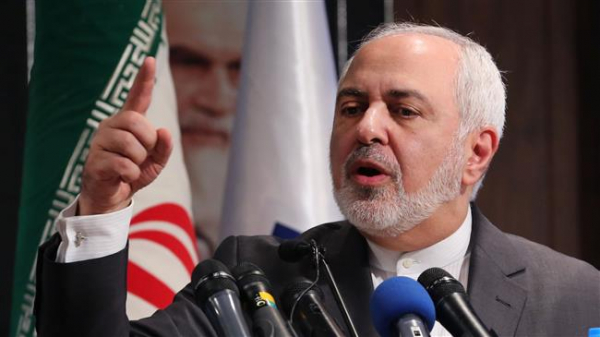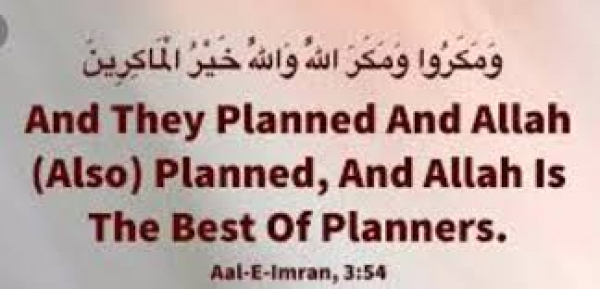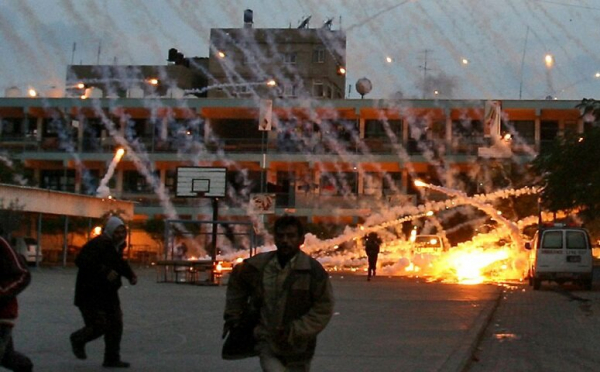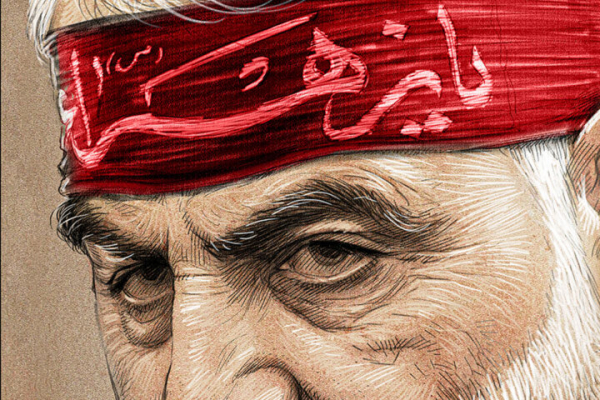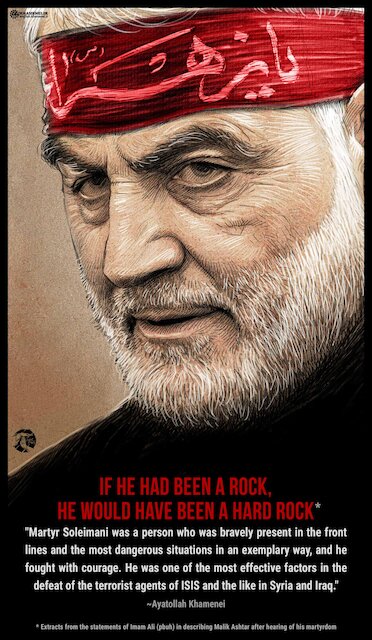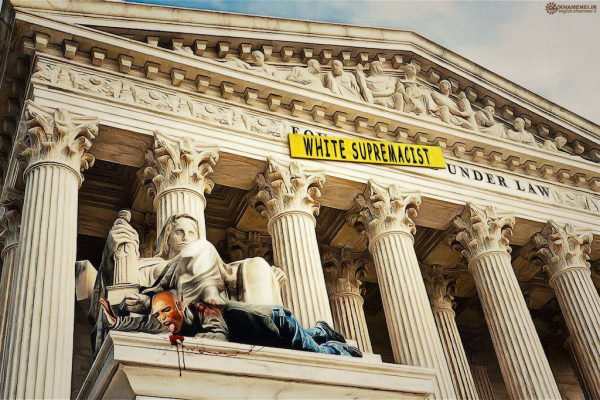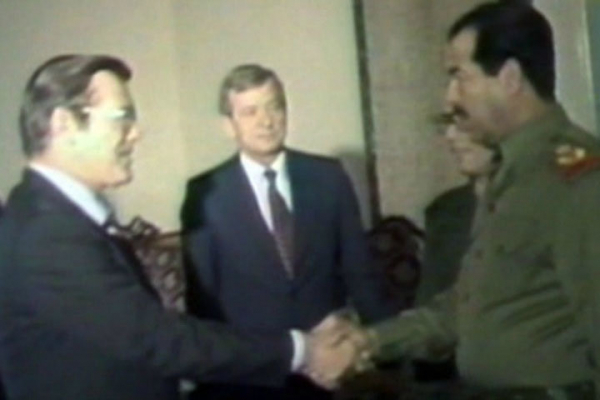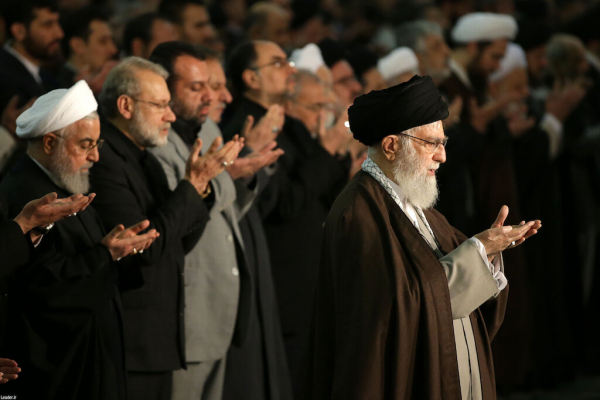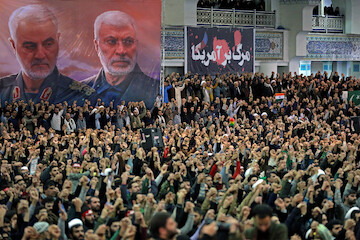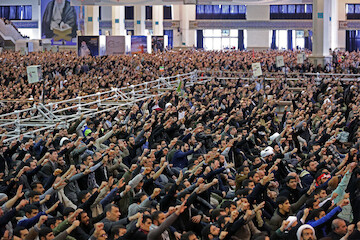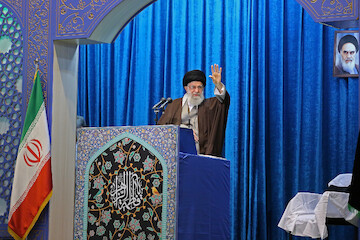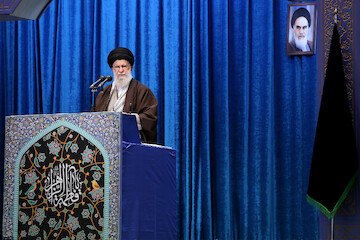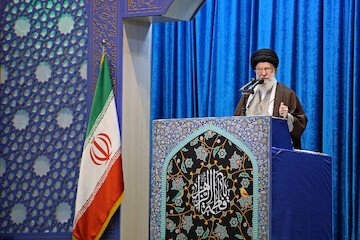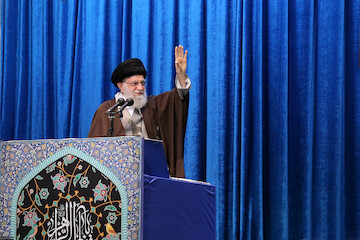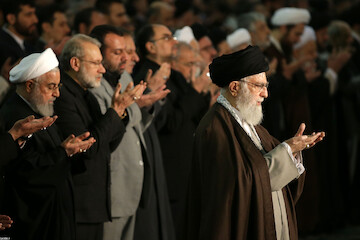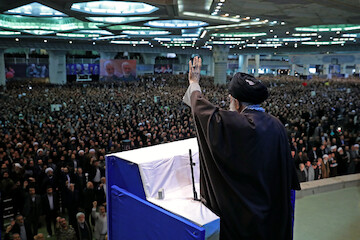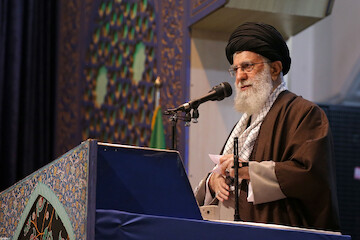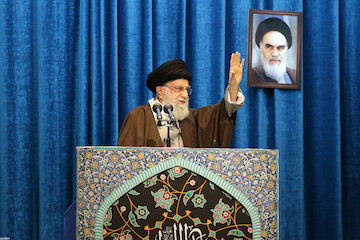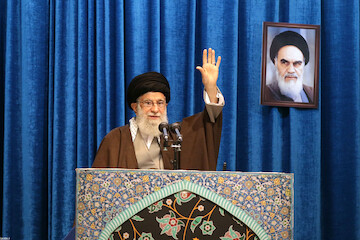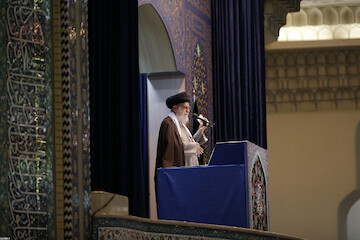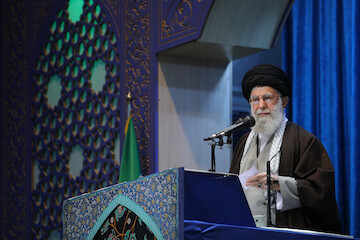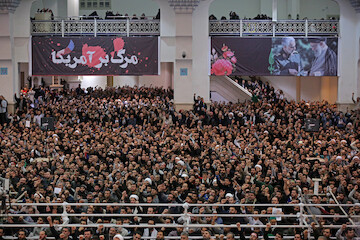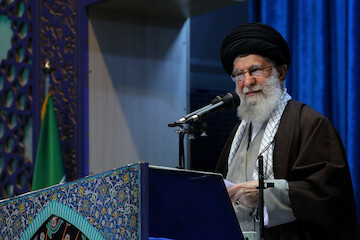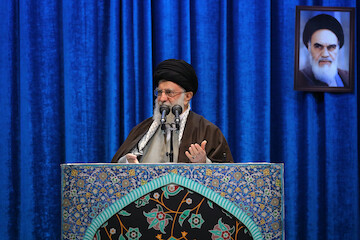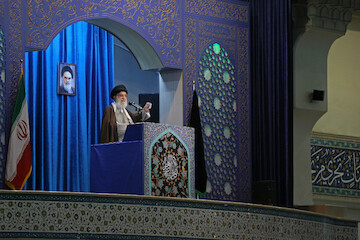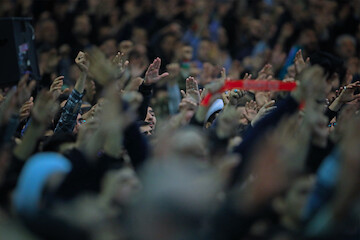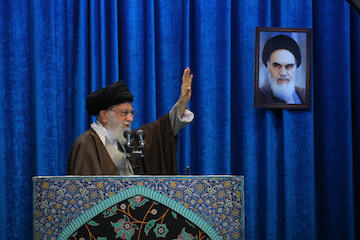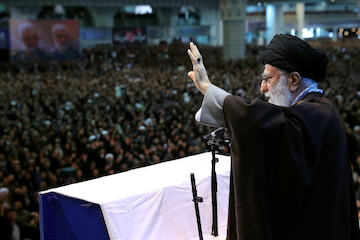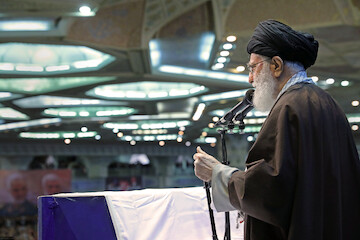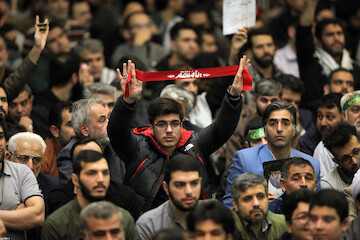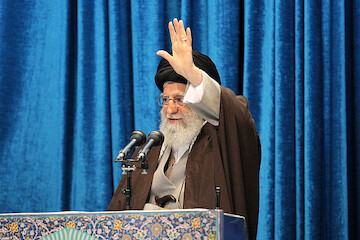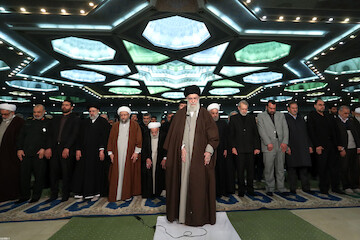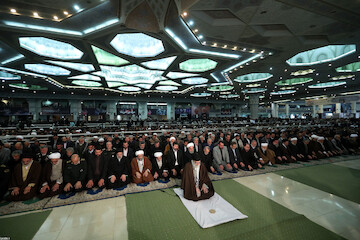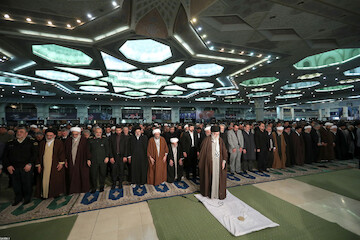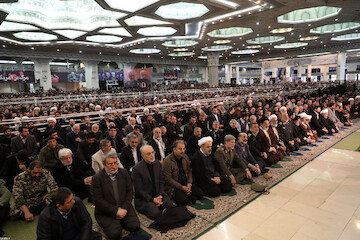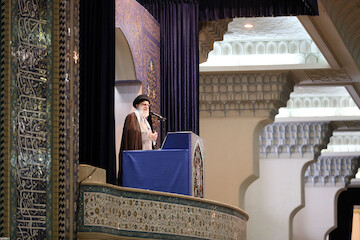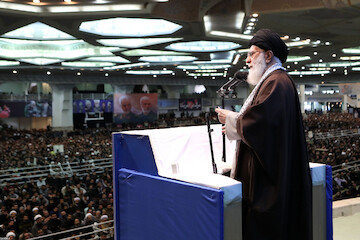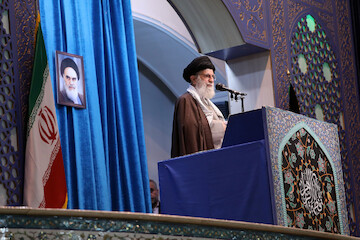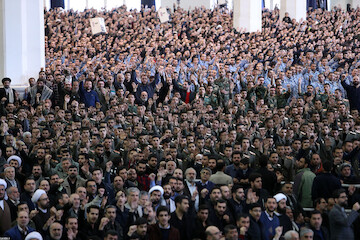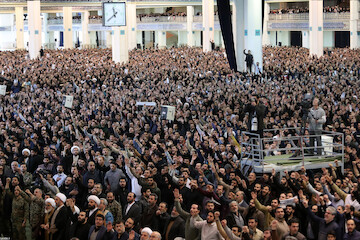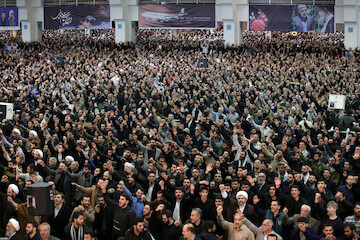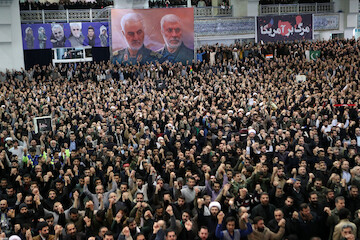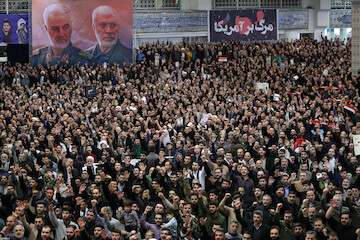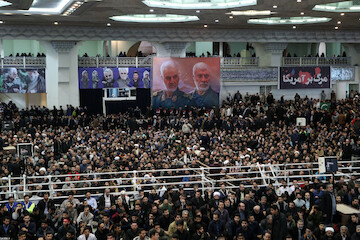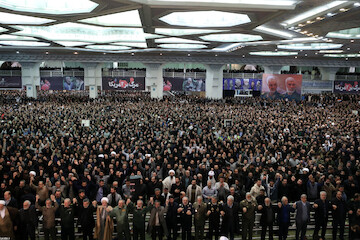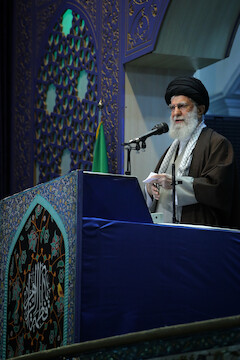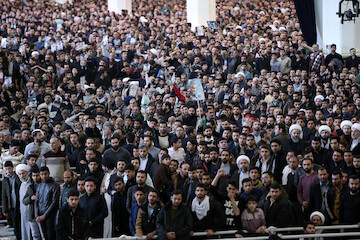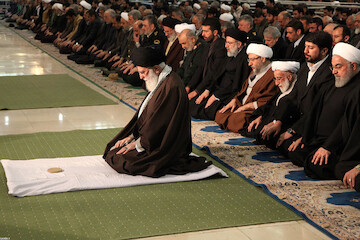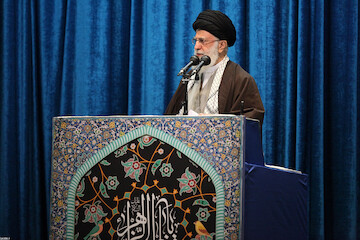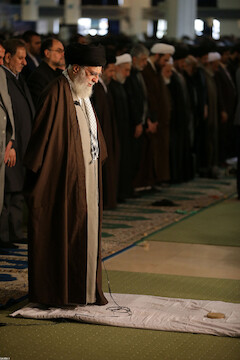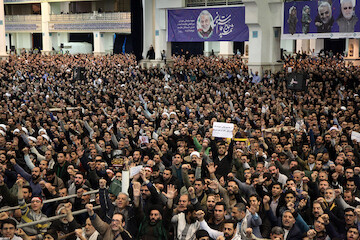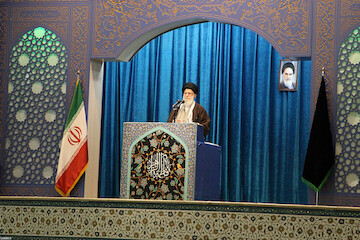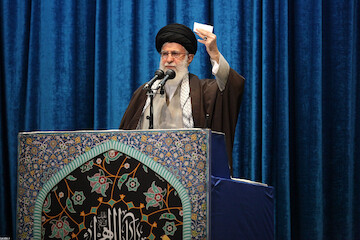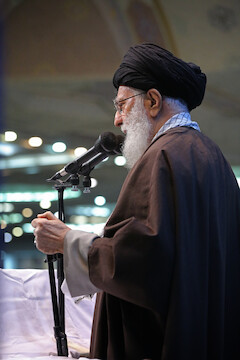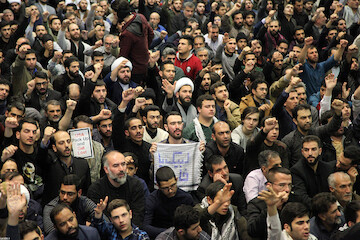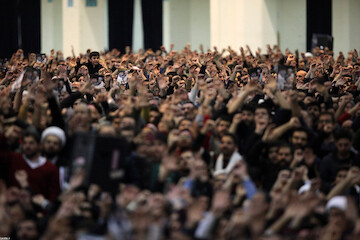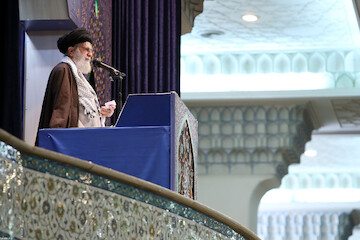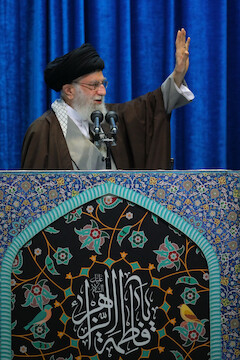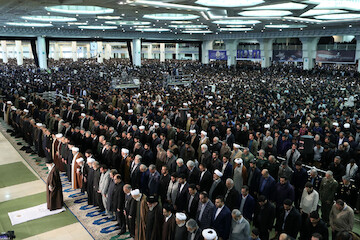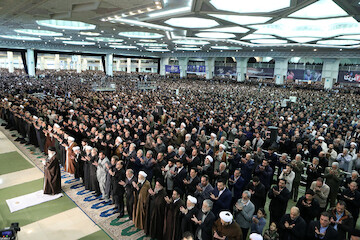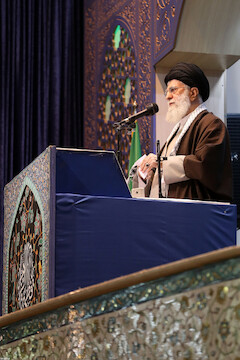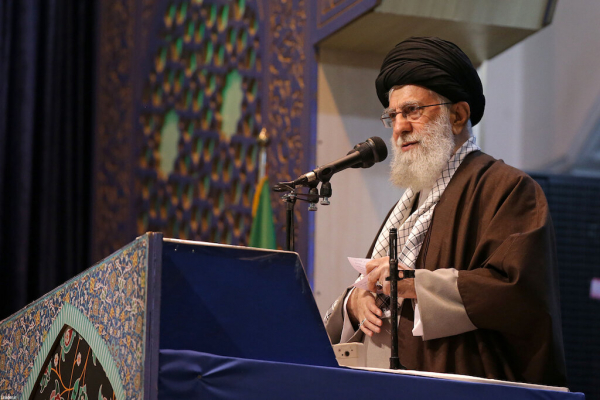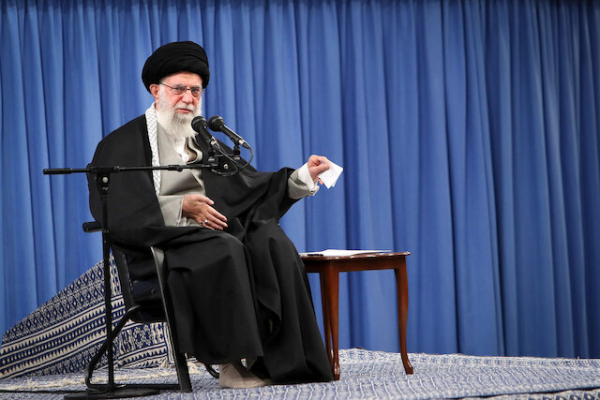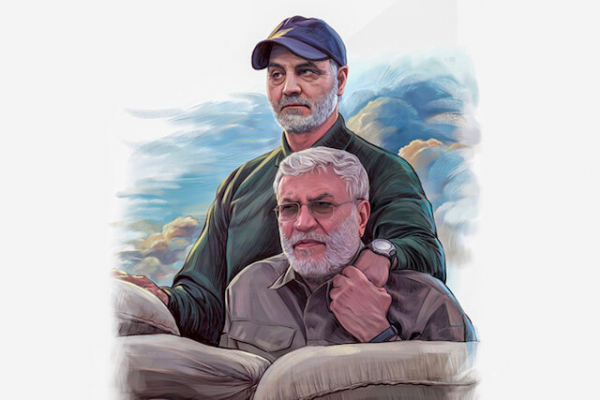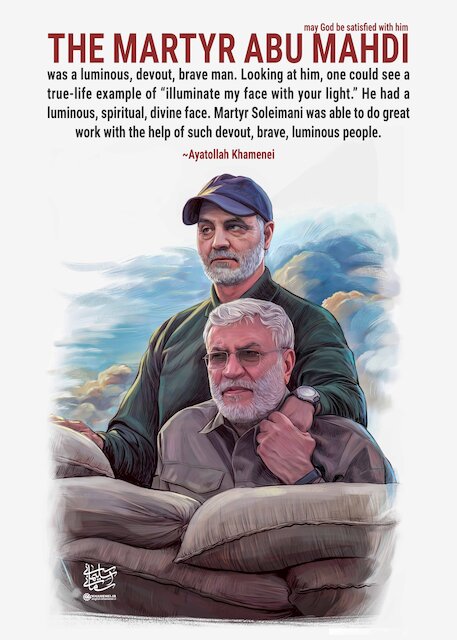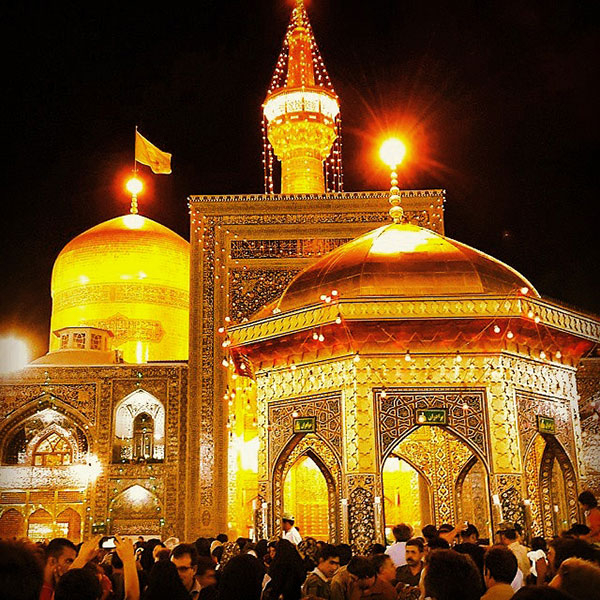hasania
Iran’s Zarif slams US plan as ‘nightmare’ for region, world
Iranian Foreign Minister Mohammad Javad Zarif has lashed out at the US’s so-called peace plan for the Israeli-Palestinian conflict, saying the initiative is a “nightmare” both for the region and the world.
Zarif said in a tweet on Tuesday that the US President Donald Trump’s “so-called ‘Vision for Peace’ is simply the dream project of a bankruptcy-ridden real estate developer.”
The Iranian foreign minister added that the plan was a “nightmare for the region and the world and, hopefully, a wake-up call for all the Muslims who have been barking up the wrong tree.”
The so-called "Vision for Peace" is simply the dream project of a bankruptcy-ridden real estate developer.
— Javad Zarif (@JZarif) January 28, 2020
But it is a nightmare for the region and the world
And, hopefully, a wake-up call for all the Muslims who have been barking up the wrong tree.#LetsUniteForPalestinians pic.twitter.com/j2CJ9JaH9c
Zarif also called for unity in the international community for the Palestinian cause, saying the so-called peace plan was considered as “sleepwalking into catastrophe.”
Ilan Goldenberg, the chief of staff to the lead US negotiator in the last failed attempt under former US President Barack Obama, also took to Twitter on Tuesday and described the ideas put forward in the 80-page US document as “non-starters.”
1. Im starting to look at this document. it might have sounded nice but it’s all about the details and many of the ideas are absolute non-starters. As I find key things I will post them. https://t.co/uxJeL7uiUt
— Ilan Goldenberg (@ilangoldenberg) January 28, 2020
Earlier in the day, Trump repeated his highly controversial endorsement of occupied Jerusalem al-Quds as Israel’s “undivided capital” as he outlined his administration’s self-styled plan for the Palestinian-Israeli conflict, which Palestinians have already dismissed.
Defying international outcry, Trump announced the general provisions of the plan he calls “the deal of century” at the White House with Israeli Prime Minister Benjamin Netanyahu at his side.
He endorsed his contentious recognition in December 2017 of Jerusalem al-Quds as Israel’s “capital,” a move he took in the face of Palestinian demands that the holy city should serve as the capital of their future state. He said the plan envisages the city as the Israeli regime’s “undivided capital.”
The so-called peace plan is widely expected to take the US’s pro-Israeli brinksmanship to a whole new level, with various reports warning that it seeks to lay the groundwork for Israel’s annexation of about half of the West Bank, which the regime occupied in 1967, including most of the Jordan Valley.
وَمَكَروا وَمَكَرَ اللَّهُ ۖ وَاللَّهُ خَيرُ الماكِرينَ (آل عمران: ۵۴)
Today, Gaza is the place where the West is being disgraced
Today, January 19th, has been named the “Day of Gaza” in Iran commemorating the resistance of the brave Palestinian people during the 22 days of the Zionist regime’s aggression on the Gaza strip in 2008-9. On this occasion, Khamenei.ir reviews Imam Khamenei's statements regarding the issue of Palestine.
Today, America and the west are lying in a blatant way on the issue of Palestine and many other issues. They are lying in a blatant way. They completely misinterpret a great disaster such as the disaster of Gaza in the 22-day war. I would like to remind you that we should pay attention to this issue. Today, Gaza and Palestine are an arena of disgrace for the west. The west with is claim to support human rights has ignored the greatest and the most disastrous violation of human rights in Gaza.
Last year, westerners did not say a single word in favor and in defense of the people of Gaza for many days. Many days passed while we were listening carefully to see if any word in favor of the people of Gaza is uttered by the Europeans - let alone the Americans - by human rights organizations and by so-called defenders of freedom. But no word was uttered. They began to talk after the people in different countries raised their voices and held different processions and demonstrations and when the scandal heated up. However, it was just talking. The west did not show any support for the people of Gaza against such a great disaster which was taking place in front of everyone's eyes. And the west has continued to adopt the same positions until today.
The United Nations disgraced itself. America was disgraced and it became even more disgraced.
The “Karbala of Gaza" is the result of the freedom of the perpetrators of great crimes
Muslim brothers and sisters throughout the world, my message now is addressed to you as well as to all persons with an alert conscience, irrespective of country and creed. Make an effort, and break the spell of impunity for the Zionist criminals. Bring to trial the political and military heads of the usurper regime who have had a role in bringing about the Gaza tragedy, and mete out to them the punishment laid down by reason and justice.
This is the first step to be taken. The political and military leaders of the usurper regime should be brought to trial. If criminals are punished, the room for criminal acts by those who possess the motives and madness to commit them will be restricted. Impunity for perpetrators of great crimes is itself a cause and incentive for further crimes.
If after the 33-day Lebanon war, the Muslim world community had earnestly demanded the punishment of Zionists leaders responsible for the terrible atrocities committed during this war, had this legitimate demand been made following the massacres of wedding processions in Afghanistan, after the atrocities committed by Blackwater mercenaries in Iraq, and following the Abu Ghuraib scandal and other cases involving U. S. soldiers, we would not have witnessed another Karbala in Gaza.
In these cases, we, Muslim states and nations, have not acted in accordance with our duty as dictated by the laws of justice and reason. Its consequence is what we are witnessing today.
The Gaza affair is unforgettable
Take a look at the conditions of Palestine in the present time. Palestine is only an example. Of course, it is a very important example, but the situation is not particular to Palestine. Take a look at Palestine and see that the Islamic Ummah suffers from a great wound which is the disaster that has befallen the great people and the historical and holy land of Palestine. What have they done to this land? What have they done to these people? What are they doing to them in the present time? Is the event of Gaza forgettable? Is it possible to erase it from the mind of the Islamic Ummah?
The pressures, savage acts, cruelties and oppressions that have been committed against the people of Gaza continue to exist even after the 22-day war during which the Zionist government was defeated and failed to achieve its goals. But despite these crimes, the Islamic Ummah cannot defend them. The Islamic Ummah has faced this phenomenon as if it were not related to it. It behaves as though it were not its right to stand up against this usurpation. It behaves as though this oppression were not shown against it. Why are we like this? Why has the Islamic Ummah faced this situation?
A dangerous and deadly cancer - namely, the fake Zionist and Israeli government - has been created by the enemies of Islam and the Islamic Ummah. Its supporters - who have collaborated with it in showing oppression and committing great sins - continue to support it while the Islamic Ummah cannot defend itself. This is our weakness. Why is that? We should make up for this weakness by returning to Islam and pivoting around the teachings of the Holy Prophet of Islam (s.w.a.).
You should keep this resilient and strong nation hopeful
What has happened to the people of Palestine in recent years - during which we witnessed the formation of Intifadas and true resistance - is an astonishing phenomenon. This has no meaning other than the guidance and assistance of God. We see all these disasters in Gaza, all these bitter events and all these pressures whether in the 22-day war or afterwards until today. We see that different disasters have befallen the people of Palestine one after the other. Nonetheless, the people have stood as firmly as a mountain. This is a very great reality and it cannot be ignored.
The main issue that I would like to discuss is that you should strengthen this resistance and this morale of the people as much as you can. As you correctly said, the only way to solve the issue of Palestine is resistance and fighting. This is correct, but this resistance and fighting is dependent on preserving the people's morale and hope and their presence on the scene. In my opinion, this is the greatest task that Palestinian groups, organizations and activists should carry out.
The purpose of the pressures that are exerted on Gaza by both sides - whether by Zionists or by westerners - is to make the people turn away from resistance. The purpose of the pressures which are exerted on the West Bank - on the issue of Jewish settlements, on the issue of Quds, which was referred to by one of the friends in this meeting, on the issue of shocking and drastic measures, on the issue of the Israeli West Bank barrier and other such issues - is to make the people turn away from resistance and to submit. We should not allow this to happen. You should not allow this to happen. You should keep the people of Palestine and Gaza - these resistant and strong people - hopeful so that they know their great movement will produce results. This is one point which, in my opinion, is very important.
This is America
An American official said, “I have hated wars since my youth” and then he cried. Well, some people might say simple-mindedly, “Wow, they have really become good people. It is good news that ‘the cat has become a believer in God’” [an Iranian expression- audience laughs]. But the same person who hates wars so much, who cries when he thinks of wars and who sheds tears in front of cameras is one of those people who do not even frown when hundreds of children are chopped into pieces in Gaza and when the Zionists behave in a merciless manner towards women, infants, children, the elderly and the youth with complete savagery and cruelty.
They shed tears as well! During the nuclear negotiations, it was witnessed that an American official said, “I have hated wars since my youth” and then he cried.
If you really hate wars so much, then say something to these malevolent butchers and executioners and frown at them. However, not only do they not frown at them, but they also encourage them. During the time when they were launching those attacks on Gaza and today that they are massacring the people in different ways in the West Bank and in Gaza, the Americans – their senior leaders – announced many times that Israel has the right to defend itself. This means that the people of Palestine do not have the right to defend themselves. If they destroy their farms, kill their youth, set their houses on fire and burn a few-month-old baby and its parents, they should not have the right to make any response.
Today too, they are encouraging, helping and supporting the Zionist regime. It is several months now that the people of Yemen have been witnessing the destruction of their hospitals, houses and infrastructures under bombardment. Humans are being massacred by transgressing airplanes, but the Americans do not speak a word and do not frown. Instead, they support. This is America.
Who supports the illegitimate Zionist government?
Who assists the fake Zionist regime that has exerted massive pressure on the Palestinians in Gaza and in the West Bank? Who supports them? Who clears the road for them? Who stands behind them? It is western powers - headed by America - that are doing so. This is while they say in their slogans that they are opposed to terrorism and DAESH. They are lying. They say things which are not true. This is jahiliyyah. This is the kind of jahiliyyah that exists in today's world.
If he had been a rock, he would have been a hard rock
"Martyr Soleimani was a person who was bravely present in the front lines and the most dangerous situations in an exemplary way, and he fought with courage. He was one of the most effective factors in the defeat of the terrorist agents of ISIS and the like in Syria and Iraq."
Imam Khamenei, January 17, 2020
Demography of Blacks in the U.S.: What do statistics tell us?
By Setareh Sadeqi*
The United States of America is a unique place in the world, for studying population and demography, thanks to the diversity of the backgrounds of both home-born and foreign-born citizens. According to the official website of the United States’ Census Bureau, one international migrant enters the United States of America every 29 seconds (1), making the country a curious and amazing case, for studying different racial and ethnic backgrounds.
Although the U.S. Congress and House abolished slavery in the 1860s, and even though a hundred years later, after much struggle, an end was put to the notorious Jim Crow Laws--which deprived the blacks, as well as Jews from their basic civil rights and considered them as inferior (2) (3)--there are minority groups in the United States who continue to express grievances about the inequality and discrimination they feel they are facing. (4)
Among these minority groups, the black people of the United States are the ones, whose protesting voice we have heard more often. (5) (6) (7). This, in part, is attributed to the fact that African-Americans, or the Black community of the U.S. has lived there for generations; the first blacks, who stepped foot on American land, were brought to what we know today as the United States of America by force, rather than by choice, and this dates back to more than 400 years ago (8) (9). Therefore, many members of the black community do not know about their background, and do not know any land or any country other than USA. Moreover, not all blacks in America have African origins. (10)
Statistics show that blacks and whites agree, on the fact, that discrimination against blacks in the United States of America is ongoing. According to a survey conducted in March 2013 by the PEW Research Center, 88 percent of black Americans and 57 percent of white Americans believe that there exists some, or a lot of discrimination against blacks in the United States of America (11).
Black or Africa-American?
According to the definition of race categories used in the 2010 Census of the United States, black or African American refers to “a person having origins in any of the Black racial groups of Africa. It includes people who indicated [on the survey forms] their race(s) as “Black, African Am., or Negro” or reported entries such as African American, Kenyan, Nigerian, or Haitian.” (12 p. 3)
On the word of The Office of Management and Budget (OMB), “Black or African American” refers to a person having origins in any of the Black racial groups of Africa. However, the official website adds further explanation when describing the racial category:
“The Black racial category includes people who marked the “Black, African Am., or Negro” checkbox. It also includes respondents who reported entries such as African American; Sub-Saharan African entries, such as Kenyan and Nigerian; and Afro-Caribbean entries, such as Haitian and Jamaican.” (13 p. 2)
Sub-Saharan African entries are classified as Black or African American, with the exception of Sudanese and Cape Verdean because of their complex, historical heritage. North African entries are classified as White, as OMB defines White as a person having origins in any of the original peoples of Europe, the Middle East, or North Africa. (13 p. 2)
It should be noted that the term “black” is becoming more frequently used; according to the Standards for the Classification of Federal Data on Race and Ethnicity offered by The Office of Management and Budget (OMB), “some Blacks who have been in the United States for generations have no record of where in Africa their ancestors were born and do not wish to be called "African-Americans." (14)
Interestingly, when surveyed in 2010, millions of Americans changed their racial category, from what they had previously checked on their survey forms in the year 2000. Non-whites, particularly Hispanics, Americans of mixed race, American Indians and Pacific Islanders were among the groups who were more likely to choose different racial category from one census to another (15). For the same reason, the United States Census Bureau is seeking to make major changes in the way it collects data on ethnicity of its citizens. In other words, the Census Bureau is trying to improve the accuracy and reliability of the data it collects on race and ethnicity of the citizens. (16)

Population
As stated by the Census Bureau of the United States, the population of the United States of America is 322,932,064 (1). In February 2007, the Census Bureau of the United States published a report entitled “The American Community: Blacks 2004” wherein data on the population of the United States was presented by breaking down the numbers into racial and Hispanic origins. Based on this data, the population of black alone in the United States of America was recorded at 34,772,381, making up 12.2 percent of the entire population of the country with a margin error of 0.03. (17)
10 years later, this number witnessed a growth in the number of blacks, either alone or in combination with one or more other races, on July 1, 2014, to 45.7 million, which showed a 1.3 percent rise from the previous year. (18 p. 1)
The same report, composed in 2014 projected the population of the blacks in the United States to grow to 74.5 million by 2060.
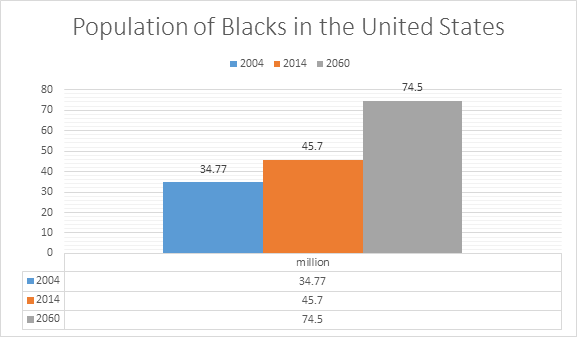
 The number of foreign-born blacks is on the rise, and this is part of what has been projected to add to the total number of blacks by 2060. Based on a PEW Research Center report, in 2013 the number of foreign-born blacks including single-race blacks and mixed-race blacks, regardless of Hispanic origin, was at 3,793,000. The number shows an over 4-time increase from the 1980s, when the foreign-born black population barely reached one million and was at 816,000. (19)
The number of foreign-born blacks is on the rise, and this is part of what has been projected to add to the total number of blacks by 2060. Based on a PEW Research Center report, in 2013 the number of foreign-born blacks including single-race blacks and mixed-race blacks, regardless of Hispanic origin, was at 3,793,000. The number shows an over 4-time increase from the 1980s, when the foreign-born black population barely reached one million and was at 816,000. (19)

Distribution across the United States
Official reports by the government of the United States show that the African-American community, otherwise known as blacks living in the United States of America, have preferred to live in southern states. The 2010 Census report states that of all respondents who reported Black alone-or-in-combination, 55 percent lived in the South, 18 percent in the Midwest, 17 percent in the Northeast, and 10 percent in the West. This pattern was similar for the Black alone population. (13 p. 7)
Based on this report, 55 percent of Blacks or African Americans, alone or in combination, lived in the south in 2010, slightly more than that of the year 2000, when 53.6 percent of the black or African Americans, alone or in combination, lived in southern states of the USA.

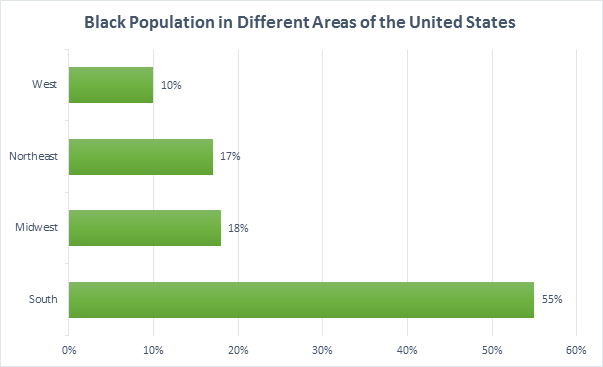
Unemployment Rates: Black vs. White
In February 2015, the U.S. Bureau of Labor Statistics published a report, wherein unemployment rates in the United States were addressed. According to the report, the unemployment rate for African-Americans was 10.4 percent, while the comparable rates for whites, Hispanics, and Asians were 4.7 percent, 6.6 percent, and 4.0 percent, respectively. This is while the national unemployment rate was 5.5 percent. (20) (21) Thus, unemployment rate among blacks in the United States was almost twice as much than the national unemployment rate.
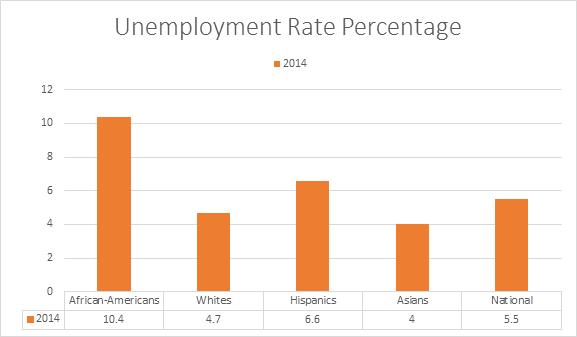
 It should be noted, that fewer job opportunities for members of the black community, in the United States, should not be attributed to lower education. In fact, the above mentioned report also indicates that in 2014, 23.7 percent of unemployed blacks in the United States had attended some college, out of whom, a 15.4 percent had bachelor’s degrees and 4.5 percent had advanced degrees.
It should be noted, that fewer job opportunities for members of the black community, in the United States, should not be attributed to lower education. In fact, the above mentioned report also indicates that in 2014, 23.7 percent of unemployed blacks in the United States had attended some college, out of whom, a 15.4 percent had bachelor’s degrees and 4.5 percent had advanced degrees.
A 2014 study by the Young Invincibles, a nonpartisan education and economic opportunity advocacy group, revealed that an African-American college graduate has the same job prospects as a white high-school dropout, or a white person with a prison record. The study attributed the gap to racial discrimination. (21)
The chart below depicts the unemployment rate difference between black Americans and the total national unemployment changes, from the year 1972 until 2009, as offered by the U.S. Bureau of Labor Statistics, available on the official website. The graph shows that, although for some time black unemployment decreased, the rate has always been much higher than that of other races, or the national unemployment rate.
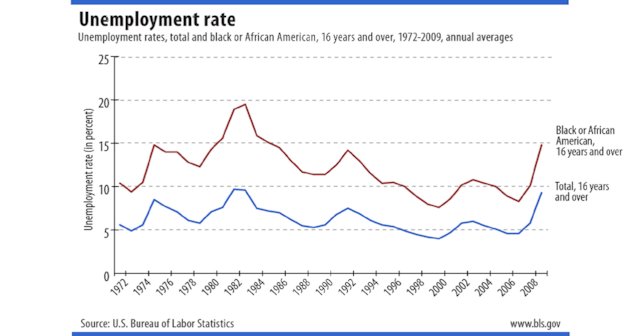
Arguably, high rates of unemployment in the black community have implications for a few other social problems, including violence and poverty, which will be addressed in the following sections.
Poverty and Income
According to the 2012 U.S. Census Bureau American Community Survey, the poverty rate for black Americans in the year 2012 was 28.1%, while this number was at 25.5% seven years before that, in 2005. The increase in poverty rate among African-Americans, otherwise known as blacks, between 2005 and 2012 was observed in every demographic of African Americans, except those aged 65 and over, since they experienced a decrease from 21.2% to 19%. The highest rate of poverty was reported for Black families with children under 18, headed by a single mother. Reportedly 47.5% of single-mother families lived in poverty, while this number was at only 8.4 percent for married-couple Black families. (23)
On the word of the American Community Service briefs, for the years 2007–2011, 42.7 million people that make up 14.3 percent of the U.S. population income are below the poverty level. (24 p. 2)
The same report provides data on poverty by breaking down numbers by race. Accordingly, the highest national poverty rates were recorded for the Natives of America and Alaskan Natives, with a 27.0 percent poverty rate and second came the Blacks or African Americans which recorded a 25.8 percent poverty. (24 p. 2)
On account of the data collected by the U.S. Census Bureau, which presents annual estimates of median household income and poverty by state, race, sex and other smaller geographic units based on data collected in the American Community Survey (aka ACS), median household income was $53,657 in 2014. The number does not show a statistically significant difference, in real terms, from the data reported in 2013 on median household income which was recorded at $54,462. (25 p. 5)
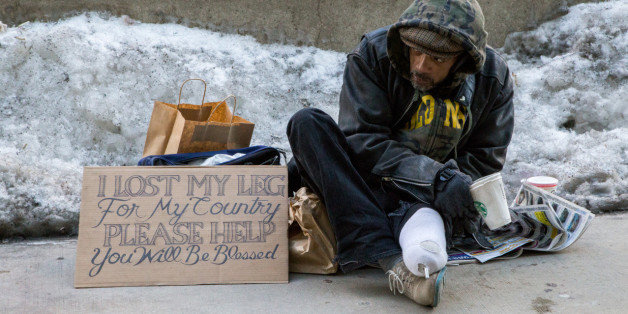
The real average income of non-Hispanic, White households experienced a slight decline of 1.7 percent between the years 2013 and 2014, dropping from $61,317 down to $60,256. For Black, Asian, and Hispanic-origin households, however, the 2013-2014 changes in real average household income were insignificant, and thus overlooked in the report. (25)
As for the median income of the race groups, the highest was recorded for Asian households with an average income of $74,297 in the year 2014. The median income of non-Hispanic White households was $60,256, while for Hispanic households, the median income was $42,491. Blacks or African Americans, once again, recorded the lowest earning, and their median income was recorded the lowest of all races, with $35,398 for the same year.
The official website of the United States Department of Labor, the Bureau of Labor Statistics published a report on “median usual weekly earnings of full-time wage and salary workers by age, race, Hispanic or Latino ethnicity, and sex, fourth quarter 2015 averages, not seasonally adjusted” for the fourth quarter of the year 2015. The report, which was last modified on January 22, 2016, reveals that Asians had the highest average weekly income in the last quarter of the year 2015, and earned $1178 on average, while Hispanic and Latino men, and women in America, recorded the lowest weekly income by earning $624 on average. Blacks or African Americans earned slightly more than Hispanic and Latinos, and recorded a median weekly earnings of $643. Black or African American men, however, earn even lower than Hispanic or Latinos, and record the lowest median weekly earnings of full-time wage and salary workers, among men of all races, by making $674 per week. (26)
The following chart sums up the aforementioned data on median weekly earnings of American citizens based on race and sex. The high rate of unemployment, higher poverty levels, as well as low incomes among Blacks or African Americans work collaboratively to exacerbate the situation of many Black Americans, who are already suffering from a discriminative establishment.

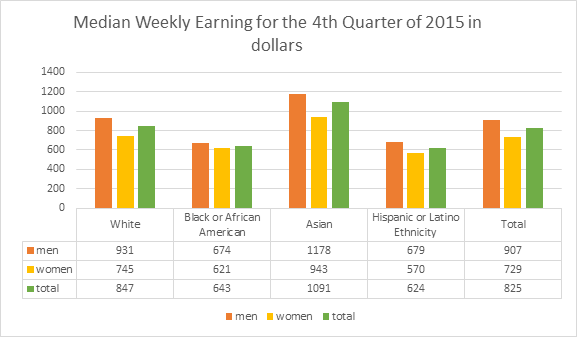
Incarceration
The United States has the highest rate of incarceration, and is the largest imprisoner of the world, holding 20 percent of the world’s prison population, while the country’s population makes up only 5 percent of the world’s total population. Not only is the U.S.’s world population the largest in the world, the country has witnessed an enormous growth in its inmate population over the past thirty years. According to The Sentencing Project the prison population of the United States was recorded at 2.2 million in the year 2013, which shows a 500% increase over the past thirty years. (27)
The statistics show a 500% increase in U.S. prison population, while the U.S. population has just increased by 45%. Behind the scenes of the U.S. prison industrial complex you can find:
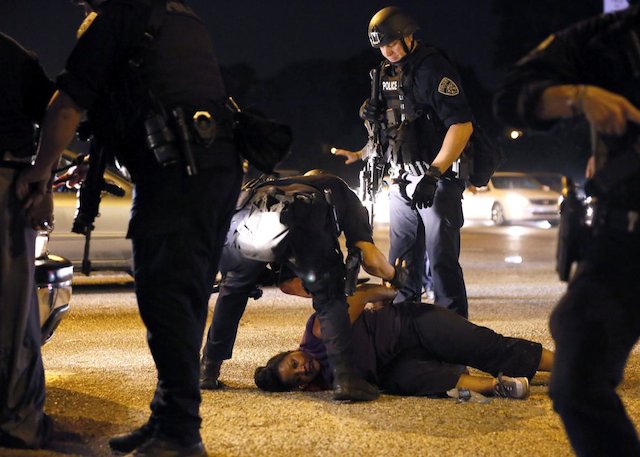
US police arrest a female Black Lives Matter activist in Baton Rouge, Louisiana. Photos: Jonathan Bachman/Reuters
“the political and economic interests of America’s elite: Laws; zealous prosecutors; the legislative, judicial, and executive branches at the local, state, and federal levels; the media; transnational corporations; schools; the church; the police; virtually every American institution; and the ideologies and rhetoric of racism, fear, and crime and punishment all work together to maintain the world’s largest prison system.” (28)
The following chart provided by The Sentencing Project, based on data from the Bureau of Justice, shows the rapid growth in incarceration rates in the United States from 1925 till 2013. The chart does not consider the imprisonment rate at private prisons in the United States of America, a rate which is itself a unique one all across the globe.

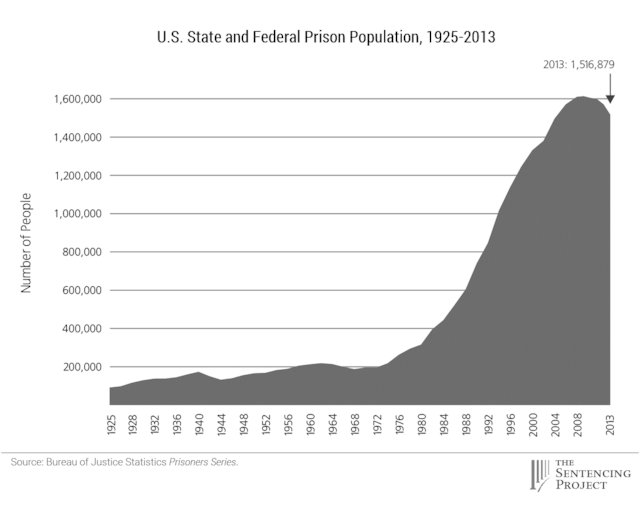
One might contend that this hefty population of imprisoned people is, mainly, because they are real criminals, who deserve to be kept in prisons; this is not the case. The number of inmates kept behind bars continues to rise tremendously, while the crime rate reveals a downward trend. Despite the fact that violent crime has declined in the U.S. (29), incarceration rate has tripled since 1980 (30). About 13 million people are brought to American jails, in any given year. It is totally absurd to mention that more than six million people are under "correctional supervision" in the U.S. These statistics are surprising, as one in fifty Americans have experienced prison sometime in their life, either as inmates, or while on parole, or probation. Currently, 1 out of every 100 Americans is being imprisoned. (31)
One of the most significant implications mass incarceration has for the American society is that a large number of children will grow up in families where fathers are absent, and thus chances of poverty, low educational competences, higher rates of violence and drug abuse- among many other issues--are much stronger.
Drug Policy Alliance published a report in June 2015 where the institute has raised concern over mass incarceration in America, and the discriminate rates of imprisonment which has largely targeted people of color in the United States. According to the report, 2.7 million children are growing up in U.S. households where at least one parent is incarcerated. (32 p. 2)
This is while on the word of the same report, two thirds of these parents are jailed for nonviolent offenses. The situation is even worse for Black or African American children. Reportedly, one in nine Black children has an incarcerated parent, while this numbers stands at one in 28 children for Latinos (aka Hispanics) and one in 57 for white children. (32 p. 2)
The fact that a major proportion of these parents were jailed for nonviolent offenses has one significant implication that the article has been trying to shed light on and that is: racial discrimination in the American judicial system.
The rate of black incarcerations continued to record higher than all other races in the year 2014. The Bureau of Justice of the United States published a report in September 2015 wherein it provides data on incarceration in the United States. On the section where the incarceration rate of the country is broke down by race, the data shows that of all black male residents, 2.7% were serving at least 1 year in prison. Although the black community is experiencing the highest rate of incarceration, the situation is not far better for Hispanic males. According to the U.S. Bureau of Justice, 1.1% of Hispanic males (were serving sentences of at least 1 year in prison when the data was collected in 2014. This is while the rate of incarceration for White American males was less than 0.5%. (33 p. 15)
The report further adds that, according to the data collected on December 31, 2014, black males had higher imprisonment rates than prisoners of other races or Hispanic origin within every age group. The rate at which black males were incarcerated was 3.8 to 10.5 times greater at each age group than that of the white males and 1.4 to 3.1 times greater than rates for Hispanic males.
What exacerbates the situation for the black community and could have stern implications for black or African Americans, is that the largest disparity happens for black men imprisoned as young as 18 or 19. In fact, 1,072 per 100,000 black male residents aged 18 to 19 were imprisoned, which means black or African American males at this age are over 10 times more likely to be in state or federal prison than whites. White Americans aged 18 or 19 were imprisoned at the rate of 102 per 100,000. (33 p. 15)

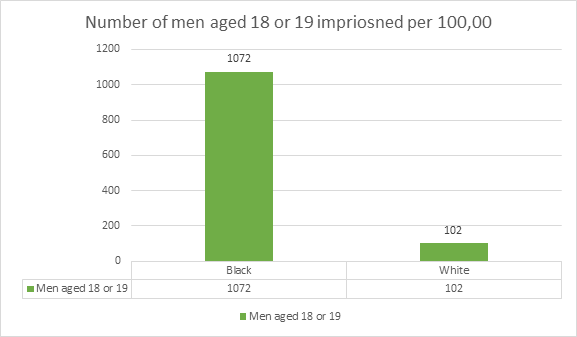
The mass incarceration of young black males has stern long-term results and affects employment rate, percentage of families headed by single mothers, black on black violence, educational competences, etc.
The highest total imprisonment rates by race and Hispanic origin were recorded for males ages 30 to 34. According to the abovementioned report, 6,412 per 100,000 black males, 2,457 per 100,000 Hispanic males, and 1,111 per 100,000 white males were serving in prison in December 2014.
More than 1% of white male Americans aged 30 to 39 were in state or federal prison at by the end of the year 2014. Black males of the same age group surpassed 6% of their total U.S. population in prison.
Moreover, a significant disparity also existed between the incarceration rate for black women than for women of other races. Women ages 30 to 34 had the highest incarceration rates among blacks or African Americans with 264 per 100,000 black females of the same age in prison. This is while white women of the same age recorded 163 per 100,000, and Hispanic females were imprisoned at a rate of 174 per 100,000. Hence, Black females were between 1.6 and 4.1 times more likely to be imprisoned than white females of any age group. (33)
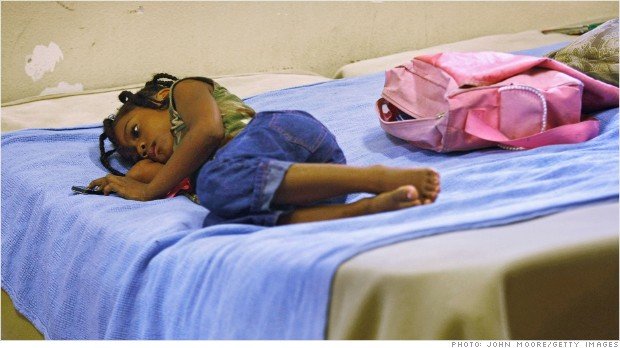
Mortality Rates
- Adolescents and teenage mortality
AstraZeneca Fact Sheet 2011 published by Department of Population, Family and Reproductive Health, and Johns Hopkins Bloomberg School of Public Health indicated that according to U.S. Census Bureau, in the years 2002 and 2003, the teen death rate among Native American and Black teenagers in the United States displayed drastic differences with that of teenagers from other races with American Indian/Alaska Natives making up 91 percent and Black Americans comprising 82 percent of teenage deaths in the United States in those years. (34)
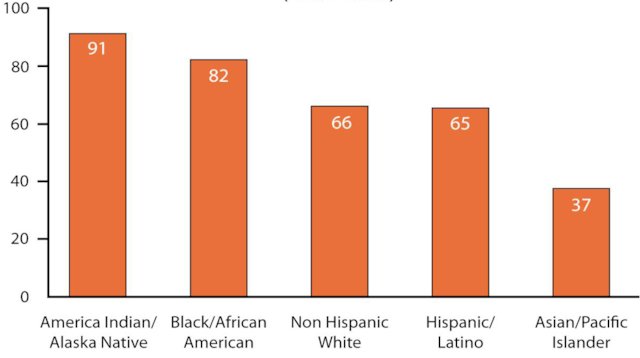
One compelling explanation for higher mortality rates for African Americans is lower access to health facilities.
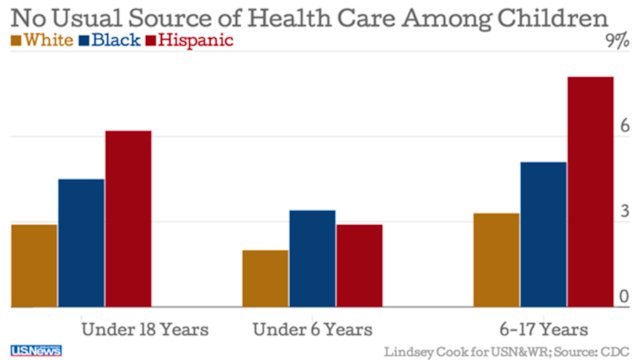
B. Infant Mortality
The infant mortality rate for the United States has remained somewhere around 6, for 4 consecutive years, from 2011 to 2015, based on data provided by the World Bank official website. (35)
Preterm-related deaths are a type of infant mortality where the infant is born preterm, which is before 37 completed weeks of gestation. According to data provided by the Center for Disease Control and Prevention, as of the year 2004, nearly one-half or in other words 46 percent of infant deaths to non-Hispanic black women, and 41 percent of infant deaths to Puerto Rican women were due to preterm-related causes of death, whereas the percentage was to a certain degree lower for other race and ethnic groups. (36)

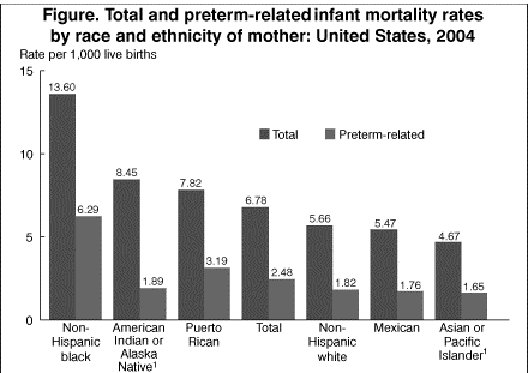
The Infant Mortality Rate or IMR is generally considered as a good indicator of the overall health of a nation’s population. In 2012, a total of 23,629 deaths occurred in children under age 1 year in the United States, showing a decline compared to the previous year. In 2012 there were 356 fewer infant deaths than in 2011. IMR decreased 1.5% from 606.7 infant deaths per 100,000 live births in 2011 to 597.8 in 2012. (37 p. 2)
According to the same report, the 10 leading causes of infant mortality in the United States of America in the year 2012 accounted for 69.8% of all infant deaths in the States. IMR for Sudden infant death syndrome (SIDS), however, experienced a decline of about 12.0%, decreasing from 48.3 infant deaths per 100,000 live births in 2011 to 42.5 in 2012. Mortality rates for the remaining leading causes of infant death do not show a significant change.
In the year 2014, more than 23,000 infants died in the United States. The U.S. Centers for Disease Control and Prevention describes loss of a baby as “a sad reality for many families” which “takes a serious toll on the health and well-being of families, as well as the nation.” (38)
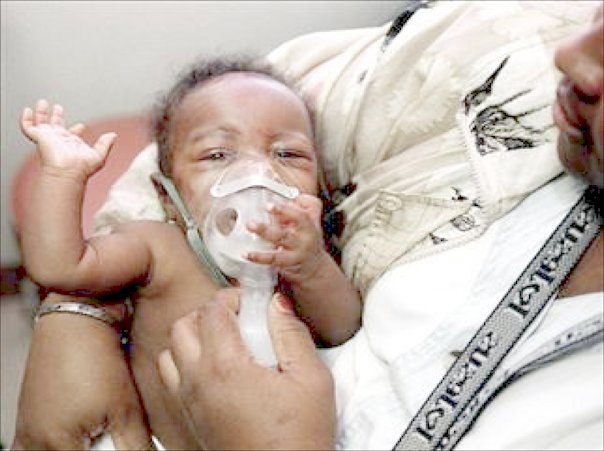
Thus, high infant mortality rate among African Americans implies that black mothers are not provided with, or rarely have access to equal health facilities; thus, they lose their babies at a much higher rate than that of whites. This could also be due to higher rates of poverty among African Americans, which entails lower access to health facilities. Moreover, as the official website of the U.S. Centers for Disease Control and Prevention states, higher rates of infant mortality takes toll on the well-being of families--and since many of the families in the black community already suffer from social problems including poverty that exacerbates the living conditions for black families.
As said by the U.S. Centers for Disease Control and Prevention, while the infant mortality rate for white America is 5.2 infants out of 1,000 births dying before age 1, the infant mortality rate for black America is much higher – 11.5 per 1,000. (39)

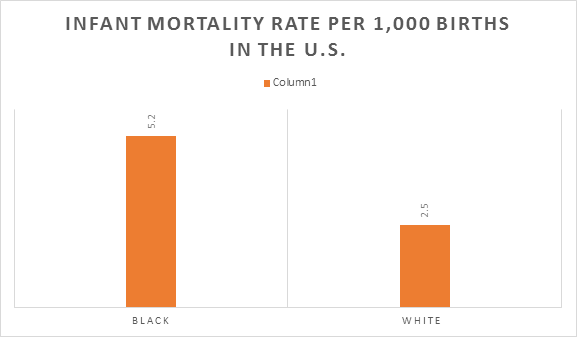
C. Maternal Mortality
In the year 2013 the Maternal Mortality Rate or MMR in the United States of America increased to 18.5 women for every 100,000 births, including women who died within 42 days of childbirth. (40)
This is mainly because American women are placed in poorer health conditions when they become pregnant, and do not receive proper care. The increase in maternal mortality rate is a result of cardiovascular conditions and other chronic health conditions, including obesity, hypertension, diabetes, and heart disease, which are very common among American pregnant women, and these chronic problems have been on the rise. (40)
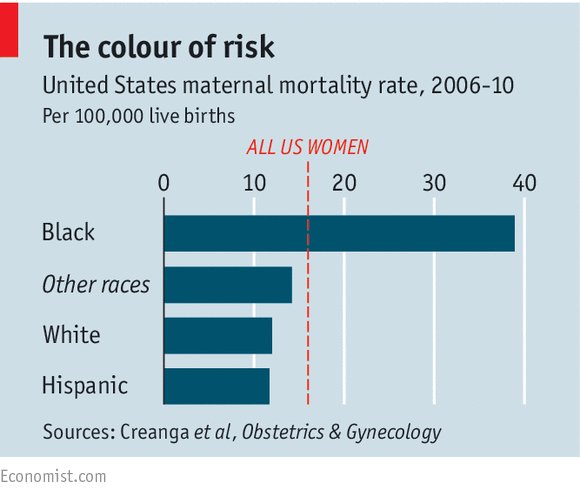

These problematic health conditions are more frequent within the African-American community and for black women. In fact, 40% of black women are obese, compared with 22% of whites. (40)
A study carried out, in multiple states in the U.S., found that eight percent of African-Americans live in a tract with a supermarket, while this number is 31 percent for white Americans. Another study conducted, nationwide, revealed that there are 418 rural “food desert” counties in the United States, residents live more than 10 miles away from a supermarket or supercenter. Only eight percent of Black Americans live in a community with one or more grocery stores, compared to 31 percent of white Americans (41).
Lower access to supermarket and grocery stores, and thus healthy food, partly explains the high rates of obesity and health issues among African-American women, which lead to higher rates of maternal mortality rates among the black community in the United States of America.
Moreover the higher rate of poverty among African-Americans, limited access to health care, and higher rates of unexpected pregnancies may explain why they are approximately four times more likely to die from pregnancy-related complications than white women.
Life Expectancy
The gap between black life expectancy and white expectancy in the United States of America was once called “embarrassing” by Lauren Friedman of Business Insider.
He reported in 2014 that the latest analysis by the Centers for Disease Control (CDC) show that the average life expectancy for Americans in 2009 was 79 years, experiencing an increase from 68 in 1950 and 57 in 1929. (42)
However, there exists a major gap between black life expectancy and white expectancy in the United States.

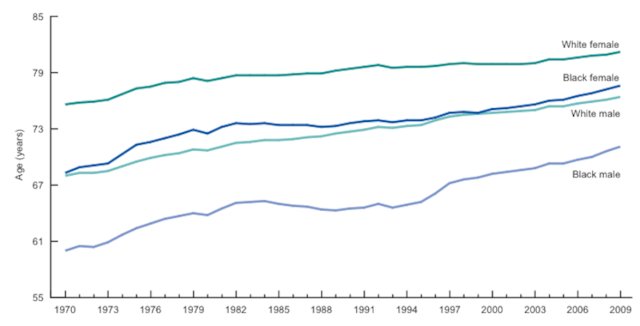
When an end was put to the slavery and when, later on, the Jim Crow laws were abandoned, the black community developed aspirations for justice, freedom and equality; however, it did not take them long to realize that things have not changed for them drastically.
Statistics, provided by governmental research bodies, reveal that people of color are still struggling for their basic rights. The most basic civil services are not available to the African American community, and black Americans continue to deal with more social justice issues than their white fellows.
While many blame blacks, for all the problems and trouble they have to deal with on a daily basis in the United States, official statistics and demographic information on the black American exposes racial and ethnic disparities, and thus explain black suffering.
References
1. U.S. and World Population Clock. United States Census Bureau. [Online] February 01, 2016. https://www.census.gov/popclock/.
2. Seperate is not Equal. Smithsonian National Musuem of American History. [Online] 2015. http://americanhistory.si.edu/brown/history/1-segregated/jim-crow.html.
3. Jim Crow Laws. National Park Service . [Online] 2015. http://www.nps.gov/malu/learn/education/jim_crow_laws.htm.
4. Cole, Juan. Race inequality between US Whites and African-Americans by the Numbers (Again). Informed Comment. [Online] November 26, 2014. http://www.juancole.com/2014/11/inequality-americans-numbers.html.
5. SELMA, M.S.L.J. |. Black America Still Marching. The Economist. [Online] March 9, 2015. http://www.economist.com/blogs/democracyinamerica/2015/03/black-america.
6. Perez, Evan. Justice report finds systematic discrimination against African-Americans in Ferguson. CNN. [Online] March 4, 2015. http://edition.cnn.com/2015/03/03/politics/justice-report-ferguson-discrimination/.
7. Ilo, Stan Chu. Being a Black Male in America: Racism and the Police. The Huffington Post. [Online] June 10, 2015. http://www.huffingtonpost.com/stan-chu-ilo/being-a-black-male-in-ame_b_7035468.html.
8. Draper, Sharon. TIMELINE OF SLAVERY IN AMERICA 1501-1865. Sharon Draper. [Online] 2015. https://sharondraper.com/timeline.pdf.
9. Rein, Lisa. Mystery of Va.'s First Slaves Is Unlocked 400 Years Later. Washington Post. [Online] September 3, 2006. http://www.washingtonpost.com/wp-dyn/content/article/2006/09/02/AR2006090201097.html.
10. Livingston, Mary M. , Pierce, Latoya and Gollop-Brown, Lou’uan . Not All Blacks Are African American: The Importance of Viewing Advisees as Individuals in a Culturally Mosaic Context. The Mentor. [Online] August 15, 2013. https://dus.psu.edu/mentor/2013/08/blacks-advisees-culturally-mosaic-context/.
11. Doherty, Carroll. For African Americans, discrimination is not dead. PEW Redearch Center. [Online] June 28, 2013. http://www.pewresearch.org/fact-tank/2013/06/28/for-african-americans-discrimination-is-not-dead/.
12. Jones, Nicholas A. , Humes, Karen R. and Ramirez, Roberto R. Overview of Race and Hispanic Origin: 2010. Washington DC : United States Census Bureau, 2010.
13. Rastogi, Sonya, et al., et al. The Black Population: 2010. Washington DC : U.S. CENSUS BUREAU, 2011.
14. Standards for the Classification of Federal Data on Race and Ethnicity. The White House. [Online] August 28, 1995. https://www.whitehouse.gov/omb/fedreg_race-ethnicity/.
15. COHN, D’VERA. Millions of Americans changed their racial or ethnic identity from one census to the next. PEW Research Center. [Online] May 5, 2014. http://www.pewresearch.org/fact-tank/2014/05/05/millions-of-americans-changed-their-racial-or-ethnic-identity-from-one-census-to-the-next/.
16. Cohn, D’Vera and Krogstad, Jens Manuel . U.S. Census looking at big changes in how it asks about race and ethnicity. PEW Research Center. [Online] March 14, 2014. http://www.pewresearch.org/fact-tank/2014/03/14/u-s-census-looking-at-big-changes-in-how-it-asks-about-race-and-ethnicity/.
17. staff of the Pew Hispanic Center. The American Community—Blacks: 2004. Washington D.C. : U.S. Census Bureau, 2007.
18. Black (African-American) History Month: February 2016. Washington DC : Census Bureau, 2016.
19. Anderson, Monica, Lopez, Mark Hugo and Rohal, Molly . A Rising Share of U.S. Black Population is Foreign Born. Washington D.C. : PEW Research Center, 2015.
20. Morrison, Aaron. Black Unemployment Rate 2015: In Better Economy, African-Americans See Minimal Gains. International Business Times. [Online] August 03, 2015. http://www.ibtimes.com/black-unemployment-rate-2015-better-economy-african-americans-see-minimal-gains-1837870.
21. Wilson, Valerie. Black unemployment is significantly higher than white unemployment regardless of educational attainment. Economy Ploicy Institute. [Online] December 15, 2015. http://www.epi.org/publication/black-unemployment-educational-attainment/.
22. African American History Month. Washington DC : U.S. BUREAU OF LABOR STATISTICS, 2010.
23. Poverty. Black Demographics. [Online] 2015. http://blackdemographics.com/households/poverty/.
24. Macartney, Suzanne, Bishaw, Alemayehu and Fontenot, Kayla . Poverty Rates for Selected Detailed Race and Hispanic Groups by State and Place: 2007–2011. Washington D.C. : U.S. Department of Commerce, Economics and Statistics Administration, Census Bureau, 2013.
25. DeNavas-Walt , Carmen and D. Proctor, Bernadette . Income and Poverty in the United States: 2014. Washington D.C. : U.S. Census Bureau, 2015.
26. Economic News Release. Bureau of Labor Statistics. [Online] January 22, 2106. http://www.bls.gov/news.release/wkyeng.t03.htm.
27. Incarceration. The Sentencing Project. [Online] 2104. http://www.sentencingproject.org/template/page.cfm?id=107.
28. Leonard, David J. After Artest: The NBA and the Assault on Blackness. s.l. : SUNY Press, 2012. Available at:https://books.google.com/books?id=-hegS07ek-AC&pg=PA114&lpg.
29. Markon, Jerry. Violent crime in U.S. on the decline. The Washington Post. [Online] 05 25, 2010. [Cited: 02 06, 2016.] http://www.washingtonpost.com/wp-dyn/content/article/2010/05/24/AR2010052402210.html.
30. Gopnik, Adam. The Caging of America: Why do we lock up so many people? The New Yorker. [Online] 01 30, 2012. [Cited: 02 06, 2016.] http://www.newyorker.com/magazine/2012/01/30/the-caging-of-america.
31. Ridgeway, James. Locking Up Profits. readersupportednews. [Online] 11 11, 2011. [Cited: 02 06, 2016.] http://readersupportednews.org/opinion2/279-82/8632-locking-up-profits.
32. The Drug, Mass Incarceration and Race. New York City : Drug Policy Alliance, 2015.
33. Carson, E. Ann. Prisoners in 2014. Washington D.C. : U.S. Department of Justice, 2015.
34. Blum, Robert Wm. and Qureshi, Farah . Morbidity and Mortality among Adolescents and Young Adults in the United States. Baltimore : Johns Hopkins Bloomberg School of Public Health, 2011.
35. Mortality rate, infant (per 1,000 live births). The World Bank. [Online] 2016. http://data.worldbank.org/indicator/SP.DYN.IMRT.IN.
36. MacDorman, Marian F. , et al., et al. Trends in Preterm-Related Infant Mortality by Race and Ethnicity: United States, 1999-2004. Atlanta : U.S. Centers for DIsease Control and Prevention, 2010.
37. Jiaquan , Xu, et al., et al. Mortality in the United States, 2012. Hyattsville : National Center for Health Statistics, 2014.
38. Infant Mortality. Centers for Disease Control and Prevention. [Online] January 12, 2016. http://www.cdc.gov/reproductivehealth/maternalinfanthealth/infantmortality.htm.
39. Cook, Lindsey. Why Black Americans Die Younger. US News. [Online] January 5, 2015. http://www.usnews.com/news/blogs/data-mine/2015/01/05/black-americans-have-fewer-years-to-live-heres-why.
40. Exceptionally deadly. The Economist. [Online] July 18, 2015. http://www.economist.com/news/united-states/21657819-death-childbirth-unusually-common-america-exceptionally-deadly.
41. Treuhaft, Sarah and Karpyn, Allison . The Grocery Gap. Oakland : Policy Link, 2010.
42. Friedman, Lauren. This Chart Showing The Gap Between Black And White Life Expectancy Should Be A National Embarrassment. Business Insider. [Online] January 10, 2014. http://www.businessinsider.sg/huge-racial-gap-in-life-expectancy-2014-1/?r=US&IR=T#.VrjzQrJ97IU.
*Setareh Sadeqi is a PhD student in American Studies at the Faculty of World Studies, University of Tehran. She is a freelance journalist, researcher and translator based in Iran.
The views, opinions and positions expressed on Op-Ed are those of the author(s) and do not necessarily reflect the views, opinions or positions of Khamenei.ir .
20 things the U.S. did to help Saddam against Iran
During Saddam's imposed war on Iran from 1980 to 1988, the Western governments provided the Iraqi regime with chemical weapons and sophisticated military equipment as well as strategic supports.
By Fatemeh Mohammadi*
When in 1980 Saddam Hussain decided to stage a war against Iran, Iraq per se did not have the political will and military might required to launch an attack on the Iranian soil. It was actually the CIA and the Reagan administration(1) who encouraged Iraq to undertake an anti-Iranian offensive from 1980 to 1988(2). After the Carter administration's operation Eagle Claw, the CIA staged a failed coup with the help of Saddam and the remnants of the old Iranian regime who sought refuge in Iraq with Saddam(3). This coup, known as Nojeh ou Nuzhih, struck a heavy blow to Iranian armed forces as several high ranking officials, who were complicit in this coup, were executed for treason(4). Saddam was even being counseled by Shah’s generals in estimating the Iranian armed forces and their defensive powers, which they evaluated to be meager because of the social upheaval and restructuring brought on by the revolution and US-backed sanctions(5).
At the beginning of the Iraqi assault on Iran in 1980, Saddam conquered many Iranian border cities. The Iranian army managed to push back Iraqi forces in 1982. In that year, after waves of victory for the Iranian forces, the superiority was clearly tilted toward the Iranian side and an Iraqi defeat looked imminent(6). An Iranian victory looked so dire to the American government that they made the strategic decision to wholeheartedly embrace the terrorist government of Saddam in order to tilt the war against Iran.
US support for Iraq was not a secret and was frequently discussed in open session of the Senate and House of Representatives. On June 9, 1992, Ted Koppel reported on ABC's Nightline, that:
"Reagan/Bush administrations permitted—and frequently encouraged—the flow of money, agricultural credits, dual-use technology(7), chemicals, and weapons to Iraq.(8)"
Although the United States delisted Iraq from the state sponsors of terrorism in 1982(9), European and American companies(10) and administrations were already helping Saddam long before that(11). This move was taken despite the fact that the US government was already convinced that Iraq was involved in terrorism. Iraq received 200 million dollars’ worth of arms from America between 1983 to 1990(12); all this for the purpose of defeating Iran.
Apart from US military aid to Iraq, there were also economic aids, since Iraqi oil exports had almost come to a halt, as had that of Iran's. While Iran was under US and European sanctions, which increased the volatility of Iran’s oil exports(13), Iraqi oil tankers were escorted under the American flag, by the American Navy past the Persian Gulf (14). Moreover, a five billion dollars(15) US loan was granted to Saddam in his war with Iran, in addition to over 680 million dollars for building oil pipes(16) and later one billion dollars of aid (17); all of which were spent on Iraqi military buildup. America's Central Intelligence Agency put a cover before Congress for a five billion dollar loan granted to Saddam by the Atlanta branch of Italian Lavoro Bank(18). All this support and assistance to Saddam ignored the fact that Saddam was financing terrorist organizations like MEK. The US credits offered to Saddam made Iraq the third-largest recipient of US assistance(19). As Rodney Castledean put it in 2011:
“During the Iran-Iraq War there is no question about it; the United States was an ally of Iraq, and gave Saddam Hussein several different kinds of aid to help him win the war.(20)”
Many American and European companies(21) were helping Saddam to build up its Weapons of Mass Destruction (WMD) programs from 1975 onward, as well as rockets and conventional weapons. According to leaked reports, Iraq’s WMD program consisted of nuclear(22), chemical and biological weapons(23) of mass destruction(24). These aids were apart from governmental aids. Later it was disclosed that American standards(25) were used in production of Iraqi biological weapons(26). The Atlanta-based Center for Disease Control (CDC) sent 14 agents "with biological warfare significance" to Iraq between 1985 and 1989(27).
France and Britain both had sold some arms to Iraq back in the 1960s, but between 1974 and 1980, Iraq started to purchase arms from different western countries. It started to acquire helicopters, antitank missiles, and high performance Mirage jet fighters from France. Other aids that the US administration offered to Saddam include counter-insurgency training, operational intelligence on the battlefield and weapons(28).
The interesting fact is that the same Ronald Rumsfeld(29) who took a hawkish attitude toward Iraq and favored an attack post 9/11, was the person who went to Baghdad as Reagan’s emissary(30) for a handshake with Saddam(31). This move was taken in December 1983 and again in March 1984 because the “Reagan administration was afraid Iraq might actually lose” the war to Iran, according to US ambassador Peter W. Galbraith(32).

A month before this historic handshake, in November 1983, Iraq had already started to use chemical weapons against Iran and the US administration was well aware of that(33). According to the Geneva Protocol of 1925, which the Americans had ratified in 1975, states undertake that they will not use chemical weapons and agree they 'will exert every effort to induce other States' to do the same(34). Charles A. Duelfer(35) said in an interview:
“During the Iran-Iraq war, Saddam used 101,000 chemical munitions, which was no secret. The U.S. once in a while would peep and say chemical weapons were bad, but at the same time we were giving Saddam intelligence that laid out where Iranian troops were massing. Then he would gas the living daylights out of them.(36)”
In reference to the Geneva protocol of 1925, Iran filed a United Nations draft resolution to condemn Saddam’s use of chemical weapons against Iran, but the US lobbied its allies at the UN to vote for a “no decision” stance against this resolution(37). Three years later, in 1988, Saddam also used chemical weapons against his own people, killing 5,000 innocent civilians, women and children in the Iraqi town of Halabja. As it turned out later, the US used to monitor the Iraqi army's messages on the use of chemicals in Halabja(38). The Reagan administration sought to obscure responsibility of this attack by falsely accusing Iran of being responsible(39). These accusations were levied while Iran had never developed or used such kind of weapons during this war or later on.

Below is a brief outline on twenty different aids Saddam recieved from the United States on his war against Iran:
A) Political support
1. US removed Iraq from list of State Sponsors of Terrorism; 1982.
2. US and its allies supported "no decision" at UN on Iraq’s use of chemical weapons; 1984.
3. Bush signed NSD 26 to ensure the security of Iraq; 1989.
B) Military Support
4. $1.5 billion worth of Pathogenic, toxigenic and other biological research materials were exported to Iraq; 1985-89.
5. US delivered 200 million dollars’ worth of arms; 1983-90.
6. CIA secretly directed armaments and hi-tech components to Iraq; 1985-90.
7. CIA secretly encouraged rogue arms dealers and private military companies to funnel arm to Iraq; 1985-90.
8. US based company, Alcolac International exported mustard gas to Iraq; 1987-88.
9. Almost 150 foreign companies supported Saddam Hussein's WMD program; 1975-91.
10. 60 officers of the Defense Intelligence Agency provided logistic information to Iraq; 1987- 88.
11. US navy escorted Iraqi oil tankers while Iraq was targeting Iranian tankers; 1987-88.
12. Saddam's elite troops were trained in US; 1980s.
13. Iraqi helicopter pilots received training in the United States; 1980s.
14. The United States assisted Iraq through a military aid program known as "Bear Spares"; 1980s.
C) US direct attack on Iran while in war with Saddam
15. US directly attacked Iran by hitting Iran’s oil platforms; 1987.
16. US directly attacked Iran’s navy in unproportioned and unreasonable war; 1988.
17. US shot down Iranian civilian airliner in the Iranian territory; 1988.
D) Blaming Iran for Iraqi attack on Halabja
18. US blamed Iran for Iraqi attack on USS Stark; 1987.
E) Logistic Support
19. US spied on Iran with aircraft during operation Eager Glacier and delivered this information to Iraq; 1987-88.
D) Economic Support
20. US funneled $5 billion of American tax payers money to Iraq; 1985-89.
*Fatemeh Mohammadi has a M.A. in Public Relations and is well experienced in Iranian history. She also has articles in comparative history which are published by Tasnim News Agency and Cultural Heritage News Agency
References
1. Dobbs, M. (2015). U.S. Had Key Role in Iraq Buildup. Washington Post. Retrieved 31 October 2015, from http://www.washingtonpost.com/archive/politics/2002/12/30/us-had-key-role-in-iraq-buildup/133cec74-3816-4652-9bd8-7d118699d6f8/
2. Pqasb.pqarchiver.com,. (2015). Dozens of U.S. Items Used in Iraq Arms. Retrieved 31 October 2015, from http://goo.gl/dnC7k0
3. Sasan Fayazmanesh (31 March 2008). The United States and Iran: Sanctions, Wars and the Policy of Dual Containment. Routledge. p. 37. https://books.google.com/books?id=Ym6TAgAAQBAJ&pg=PT37&lpg
4. Mark J. Gasiorowski (2002), "The Nuzhih Plot and Iranian Politics", Int. J. Middle East Stud. 34 (2002), 645–666. http://tulane.edu/liberal-arts/political-science/upload/Nuzhih-IJMES-11-02.pdf
5. Rajaee, Farhang, ed. (1993). The Iran-Iraq War: The Politics of Aggression. Gainesville: University Press of Florida.
6. Webcitation.org,. (2015). UNITED STATES DISTRICT COURT SOUTHERN DISTRICT OF FLORIDA. Retrieved 31 October 2015, from http://www.webcitation.org/5flvP0UgC
7. Those technologies with both military and civilian applications
8. ABC Nightline. July 1, 1992.
9. Historycommons.org,. (2015). Context of 'February 1982: Reagan Administration Removes Iraq from Terrorist Sponsor List'. Retrieved 31 October 2015, from http://www.historycommons.org/context.jsp?item=us_iraq_80s_748
10. Peterson, T. (2002). Leaked report says German and US firms supplied arms to Saddam. The Independent. Retrieved 31 October 2015, from http://www.independent.co.uk/news/world/politics/leaked-report-says-german-and-us-firms-supplied-arms-to-saddam-136466.html
11. DIXON, N. (2004). How Reagan Armed Saddam with Chemical Weapons. counterpunch.org. Retrieved 31 October 2015, from http://www.counterpunch.org/2004/06/17/how-reagan-armed-saddam-with-chemical-weapons/
12. Ibid
13. Mohaddes, K. and M.H. Pesaran (2013), 'One hundred years of oil income and the Iranian economy: a curse or blessing', Cambridge Working Papers in Economics 1302, Faculty of Economics, University of Cambridge. http://www.econ.cam.ac.uk/people/cto/km418/100_Iranian_Oil.pdf
14. Cordesman, A., & Wagner, A. (1990). The Lessons of Modern War - Volume II - The Iran-Iraq War – Chapter 14: The Tanker War And The Lessons Of Naval Conflict (1st ed., p. 1). Center for Strategic and International Studies. Retrieved from http://csis.org/files/media/csis/pubs/9005lessonsiraniraqii-chap14.pdf and see also: Kamalipour, Yahya R., and Nancy Snow. 2004. War, media, and propaganda: a global perspective. Maryland: Rowman and Littlefield Publishers, Inc. https://books.google.com/books?id=IyQeVFowLnwC&pg=PA150&lpg
15. Baker, R. (1993). IRAQGATE: The Big One That (Almost) Got Away Who Chased it -- and Who Didn't. russbaker. Retrieved 31 October 2015, from http://www.russbaker.com/archives/CJR%20-%20Iraqgate,%20by%20Russ%20W_%20Baker.htm
16. Rodney Castleden. Conflicts that Changed the World. Canary Press eBooks. p. 436. https://books.google.de/books?id=7_4qDswACxQC&pg=PT436&dq
17. Op. cit. Baker, R. (1993)
18. Goodman, M. (2009). The CIA's History of Deception. Consortiumnews.com. Retrieved 31 October 2015, from https://consortiumnews.com/2009/052309a.html
19. Galbraith, P. (2015). The true Iraq appeasers - Editorials & Commentary - International Herald Tribune - The New York Times. Nytimes.com. Retrieved 31 October 2015, from http://www.nytimes.com/2006/09/04/opinion/04iht-edgal.2687907.html?_r=0
20. Ibid
21. For a comprehensive list of companies who aided Saddam against Iran see: op. cit. Goodman, M. (2009) and also see: Crogan, J. (2003). Made in the USA, Part III: The Dishonor Roll. L.A. Weekly. Retrieved 31 October 2015, from http://www.laweekly.com/news/made-in-the-usa-part-iii-the-dishonor-roll-2136290
22. Timmerman, K. (2015). U.S. Export Policy Toward Iraq: An Agenda for Tomorrow. Kentimmerman.com. Retrieved 31 October 2015, from http://www.kentimmerman.com/krt/iraq_921027.htm
23. Lauria, J. (2015). Iraq Purchased Anthrax From US Company. Globalpolicy.org. Retrieved 31 October 2015, from https://www.globalpolicy.org/component/content/article/168/34666.html
24. Op. cit. Peterson, T. (2002).
25. Second Staff Report on U.S. Chemical and Biological Warfare-Related Dual-Use Exports to Iraq and The Possible Impact on the Health Consequences of the War. (2015). Retrieved from http://www.gulfwarvets.com/arison/banking.htm or see: United States Senate. (2015). Washington. Retrieved from http://www.gulfweb.org/bigdoc/report/riegle1.html
26. http://www.foia.cia.gov/sites/default/files/document_conversions/89801/DOC_0001156395.pdf
27. Drury, T. (2015). Perspective: How Iraq built its weapons programs with a little help from its friends. Sptimes.com. Retrieved 31 October 2015, from http://www.sptimes.com/2003/03/16/news_pf/Perspective/How_Iraq_built_its_we.shtml
28. Woodward, Bob. "CIA Aiding Iraq in Gulf War; Target Data From U.S. Satellites Supplied for Nearly 2 Years", Washington Post. Dec 15, 1986.
29. Battle, J. (2015). Shaking Hands with Saddam Hussein: The U.S. Tilts toward Iraq, 1980-1984. Nsarchive.gwu.edu. Retrieved 31 October 2015, from http://nsarchive.gwu.edu/NSAEBB/NSAEBB82/index.htm
30. Shuster, M. (2015). U.S. Links to Saddam During Iran-Iraq War. New York. from http://www.npr.org/templates/story/story.php?storyId=4859238
31. MURPHY, J. (2015). U.S. And Iraq Go Way Back. Cbsnews.com. Retrieved 31 October 2015, from http://www.cbsnews.com/news/us-and-iraq-go-way-back/
32. Op. cit. Galbraith, P. (2015)
33. Cooper, R. (2013). CIA 'helped Saddam Hussein carry out chemical weapons attack on Iran' in 1988 under Ronald Reagan. Mail Online. Retrieved 31 October 2015, from http://www.dailymail.co.uk/news/article-2402174/
34. ibid
35. He led the Iraq Survey Group (ISG) that conducted the investigation of the scope of Iraq's WMD
36. Kingsbury, A. (2009). Iraq, WMD, Bush and the Mind of Saddam Hussein: Hide and Seek by Charles Duelfer. US News & World Report. Retrieved 31 October 2015, from http://www.usnews.com/opinion/articles/2009/02/19/iraq-wmd-bush-and-the-mind-of-saddam-hussein-hide-and-seek-by-charles-duelfer
37. http://www.gwu.edu/~nsarchiv/NSAEBB/NSAEBB82/iraq47.pdf
38. Pear, R. (2015). U.S. Says It Monitored Iraqi Messages on Gas. Nytimes.com. Retrieved 31 October 2015, from http://www.nytimes.com/1988/09/15/world/us-says-it-monitored-iraqi-messages-on-gas.html
39. Op. cit. Galbraith, P. (2015)
Imam Khamenei led the Friday prayers (Photos)
The attack on Al-Asad by the IRGC abolished the prestige and awe of the US
This Friday, January 17, 2020, the political-religious ceremony of the Friday Prayers in Tehran was led by Imam Khamenei - the Supreme Leader of the Islamic Revolution - for the first time after 8 years.
In his sermons, Imam Khamenei addressed the nation regarding the two past eventful weeks and opened his speech by stating, “There is a very meaningful verse, like the other verses of the Qur’an, in Chapter Ibrahim. My talk today is about this verse and the verses following it. In this verse, Prophet Moses is ordered to remind them of the ‘Days of Allah,’ or by means of the ‘Days of Allah’ remind them of God, God’s religion and the Day of Judgment. Then, Almighty God announces that if people are thankful, blessings will increase day by day. However, if they are not thankful for God’s blessings, then divine punishment will come upon them. He then continues that the Days of Allah are signs and proofs for those who have two characteristics, patience and gratefulness. Patience refers to someone who is persevering and patient. Gratefulness refers to knowing the divine blessings and thanking God for them.”
The Supreme Leader referred to the past two weeks in Iranian affairs as examples of the same verse and asserted, “The last two weeks that we have just passed through were full of extraordinary events: bitter events, sweet events, and events from which the Iranian nation should take lessons. What does the ‘Day of Allah’ mean? That is the day when the hand of the power of God is seen by human beings in events. That is when tens of millions in Iran and hundreds of thousands in Iraq and some other countries took to the streets to pay homage to the Commander of the Quds Force, forming the largest farewell (funeral) in the world. This was an example of a Day of Allah. What happened was not brought about by any other agent other than the power of God.”
Imam Khamenei praised the day when the Islamic Revolutionary Guard Corps responded to the criminal assassination of General Qasem Soleimani by attacking a United States military base in Iraq as a Day of Allah and asserted, “We, the Iranian nation, witnessed the two days - when millions took part in the funeral of the martyrs and when the missiles hit the U.S. base - as Days of Allah. These days are turning points in history. They are days, which build history and not typical days.”
The Leader of the Islamic Revolution praised the Iranian nation’s courage in powerfully standing up to U.S. aggression and stressed, “That a nation has the power and spirit to slap an arrogant, aggressive global power is a sign of God’s power. Therefore, that day too is a Day of Allah.”
His Eminence added, “These days pass by; however, their impact on the lives of people and on the nations’ spirit, attitude and path remains. The influence of these days are lasting and at times eternal.”
Imam Khamenei mentioned the miraculous, massive turnout in support of the Martyred IRGC Commander, General Qasem Soleimani and said, “We must identify the material and spiritual dimensions of this phenomenon. After forty-one years since the victory of the Islamic Revolution, which power has motivated this extraordinary, large crowd? Who roused the tears, love and passion? What could manifest such a miracle other than the power of God?”
The Supreme Leader warned against ignoring Divine assistance in such incidents and stated, “Those who cannot see the power of God in these events and engage in material analyses stay behind. One should see the power of God. The spiritual and very important aspect of this event is that the Almighty God does this. When the Almighty God creates such a move in a nation, one feels that God's will is to make that nation victorious.”
Imam Khamenei asserted that the massive turnout for the funeral of the assassinated General is a declaration of adherence to the path set by Imam Khomeini and held, “This shows that if this nation moves on this path, it will be victorious. It also reflects the spirituality and essence of this nation: their love, loyalty, perseverance and great allegiance to the path of Imam Khomeini. The people manifested their allegiance to Imam Khomeini’s path with their presence. An allegiance of this magnitude of the people to Imam (Khomeini) was extraordinary, more than thirty years after the departure of the honorable Imam. This is how Imam Khomeini is alive.”
His Eminence stressed that the martyrdom of General Soleimani once again disgraced the United States for having assassinated the champion of the fight against terrorism and declared, “This was about the funeral. The martyrdom itself is a sign of Divine power. It brought about disgrace for the U.S. government, the shameless government of the United States of America. They martyred the most prominent and most powerful commander in the fight against terrorism. Martyr Soleimani was literally the most powerful commander in the fight against terrorism in the region. He is well-known for this. Besides him, who had the power to achieve what he did?”
The Supreme Leader further elaborated, “Martyr Soleimani would enter an area completely surrounded by the enemy by helicopter. There would be good, young men in the area who were alone, without a commander. When they would see Hajj Qasem Soleimani, they would gain spirit and motivation, and they would make the enemy retreat. Who can do such things?”
His Eminence described the U.S. assassination of the Quds Force Commander as cowardly and added, “(He was) the anti-terrorist Commander of the whole region. They assassinated the strongest and most prominent Commander. They did not confront him in the battlefield. They assassinated him thievishly and cowardly. The U.S. government assassinated him. They themselves have confessed that this has disgraced them.”
Slamming the mainstream media dominated by the Zionists for their trying in vain to vilify the Iranian champion in the fight against ISIS and terrorism, Imam Khamenei articulated, “A few days before and after this incident, the Zionist news empire around the world tried to accuse our dear, honored Commander of being a terrorist! The U.S. president himself, his Secretary of State, and Zionist news agencies all over the world repeated the idea that he was a terrorist! Yet, despite the attempts of the Zionist news empire, the Almighty God changed things in a way to give results exactly opposite to what they wanted. Not only here in Iran, but also in various countries, people saluted the soul of this great martyr and burned the flags of the Zionist regime and the U.S.”
The Supreme Leader referred to the rare confession of the United States in openly claiming responsibility for the criminal assassination of the Iranian Commander and stated, “Prior to this incident, it was the Zionist regime who assassinated people. They assassinated the Hamas leader and claimed responsibility for it. They assassinated the leader of Jihad and declared responsibility for it. They assassinated individuals and said they had done it. The Americans killed a lot of people in Iraq, Afghanistan, and elsewhere. They killed as many people as they could, but they didn't confess that had done so. In this case, they confessed that they assassinated him (Martyr Soleimani). The U.S. President himself confessed. God Almighty made him confess. They admitted that they are terrorists. They said that they had assassinated him. This is an utter disgrace.”
Calling Iran’s retaliatory measure in targeting a U.S. military base in Iraq as another heavy blow to the concocted dignity and artificial superiority of the United States, Imam Khamenei maintained, “The IRGC's strong response also deserves thought and contemplation. This Day of Allah, the extraordinary funeral and martyrdom of the beloved martyr, is one side of the matter. The strong reaction and response of the IRGC on the other side is also worthy of consideration. It was a blow to the United States. Of course, it was an effective military strike. However, more important than a military strike, it was a serious blow to dignity, a blow to the dignity of the U.S. as a superpower.”
The Supreme Leader pointed to the many blows the U.S. has been receiving over the years while pursuing military intervention in the West Asian region and added, “The U.S. has been receiving blows in Syria, Iraq, Lebanon and Afghanistan for many years, blows from the powerful Resistance. However, this case was more important than all the previous blows. It was a major blow to their dignity. It was a blow to the sense of awe for the U.S. This strike cannot be compensated for by anything. Now, they announce that they will intensify sanctions, but that cannot make up for the lost dignity of the U.S. The powerful response had this effect.”
Imam Khamenei described IRGC’s involvement in Palestine, Gaza and other parts of West Asia as a measure to counter enemies targeting Iran and stressed, “Yes, the combatants of the Quds Force go to Palestine, Gaza and other areas that need help, but they provide security for our own country. The enemy that the U.S. has equipped is not just targeting Iraq and Syria. It is ultimately targeting Iran, dear Iran.They created ISIS, not just for dominating Iraq. Their main and ultimate goal was Iran. They wanted to disrupt our security in our borders, our cities and our families in this way. They were stopped with the help of the faithful and dear youth who left and made this great effort.”
His Eminence condemned U.S. officials who hypocritically claim to stand by the people of Iran and added, “The nation favors resistance; the nation favors resisting against the aggression of enemies. The American clowns who falsely and shamelessly say that they are standing by the Iranian people should see people as they actually are. Do those few hundreds of people who disrespect the posters of our honored martyr represent the Iranians? Or, does this huge crowd of millions who came to the streets represent the Iranian nation?”
The Supreme Leader also stated, “Of course, the spokesmen of the villainous U.S. government repeatedly say that they are standing by the Iranian people. They lie. If you are standing by the Iranian people, it is only to stab them in the heart with your venomous daggers. Of course, you have so far failed to do so, and you will certainly continue to fail to do so.”
The Supreme Leader of the Islamic Revolution referred to the tragic incident of a plane crash last week saying, “The plane crash was a bitter accident that truly broke our hearts. The loss of the dear, young people and those who had come here from other countries was a truly heartrending event.”
Imam Khamenei pointed out that the enemies of Iran secretly cheered the tragedy as they misused it as an opportunity to overshadow great achievements by Iran and stated, “As much as we were grieved by the tragedy of the plane crash, enemies were happy about it. They tried to question the Armed Forces of the Islamic Republic and use it to overshadow the great event. They were mistaken, ‘And they planned and Allah (also) planned, and Allah is the best of planners.’ [Qur’an 3:54]”
The Supreme Leader blasted European governments for seeking to send Iran’s case to the Security Council, breaching their commitments as set by the Iran deal - the JCPOA and asserted, “Another action they did to overshadow this great event was what the three European states did. The vicious British government and the French and German governments threatened to send Iran's case to the Security Council. After the U.S. withdrew from the JCPOA, these governments were making nonsensical remarks. I said I didn’t trust them. After nearly a year, it has been proven that they are truly the footmen of the U.S.”
Imam Khamenei censured these European states for wishfully trying to bring the Iranian nation to its knees and held, “These abject countries - the UK, France and Germany - look forward to bringing the Iranian nation to its knees. The U.S. who was bigger than you, your master and your leader, was unable to bring the Iranian nation to its knees. You are not powerful enough to bring the Iranian nation to its knees.”
Imam Khamenei described the European signatories of the Joint Comprehensive Plan of Action as terrorists dressed as gentlemen at the negotiating table by saying, “The so-called ‘gentlemen’ around the negotiating table are the same terrorists of the Baghdad airport. They are the same. The iron hand emerged from the velvet glove and revealed itself.”
Imam Khamenei urged the Iranian nation to work hard towards fortifying their economy, science and technology as well as military power and emphasized, “What is the Iranian nation's duty now? I sum it up in one statement. The dear Iranian nation should be determined to become stronger. The only way before the Iranian nation is becoming more powerful. Of course, power isn’t just military force. The country’s economy should be strengthened. An end should be put to reliance on oil. Scientific and technological growth should continue. The backing for all of these is the people’s presence.”
The Supreme Leader of the Islamic Revolution stated the following in the Arabic part of his sermon today, “The Iranian Army struck a counterattack, for now, devastating a U.S. base with its missiles and destroying the dignity and awe of the tyrannical, arrogant U.S. government. However, the main punishment (for the U.S.) will be expulsion from the region. The people of Iran, in tens of millions, manifested an unprecedented farewell (funeral) for the two great fighters for the cause of God. In many cities, the Iraqi people participated in the funeral for all of the martyrs in paying homage to them. In several other countries, people showed their sympathy with passionate turnouts too.”
Last night’s action was merely a slap, but the U.S. must leave the region
While meeting with the people of Qom this morning, the Leader of the Revolution paid tribute to the uprising of the people of Qom during the Revolution and stated, “This ceremony is being held auspiciously every year since forty or forty-one years ago. On January 9, the people from across the country look forward to the ceremony held by the people of Qom, on the significant and historical event.
Regarding the January 9 event (1978), we should think and learn lessons. Most of you, brothers and sisters present here, did not see that day. Yet, the memory of that day is alive. We should learn the lessons. The past should be used to guide us as a light in the path toward the future.”
His Eminence added, “On January 9, the people of Qom stood before the merciless armed forces of the [Pahlavi] regime, to defend the great Marja’, the honourable leader of the Revolution, who was not in Iran at the time. The people had no arms in hand. What drove them to engage? Faith and religious zeal. These are two keywords: faith and religious zeal. When those people of Qom came to streets and confronted the police and the regime’s forces, and some of them were martyred, some others injured; while the regime’s agents assumed they were obliterated; neither the uprising people of Qom nor others imagined this move could be the prelude to such a huge transformation—not only in our country but also in the world did anyone imagine that.”
Ayatollah Khamenei hailed the religious faith of the people of Qom that unleashed their uprising prior to the Islamic Revolution and asserted, “That move on that day which was carried out by the people due to their faith and religious zeal, was fortified by Exalted Allah, continued; and was followed by people’s turnout on every arbaeen [periods of forty days after the martyrdom of the killed protesters]. The honourable Imam Khomeini led the people, and it finally resulted in the extensive uprising of the people in next year’s Bahman [February], in 1979. So the move by a number of the sincere people of Qom initiated such a great revolution.”
In meeting with thousands of people in Qom, Imam Khamenei regarded Iran’s missile attacks on two American bases in Iraq as a slap and stressed that the main opposition involves ending the corruptive and detrimental presence of the U.S. in the region. He stated, “One of the great blessings from Hajj Qasem Soleimani’s martyrdom and spirituality was the enthusiastic turn out for the funeral ceremonies held in different cities in Iran and Iraq. These ceremonies for escorting him manifested to the world that the Islamic Revolution is alive, and I feel humble at what the great soul of this dear martyr granted to Iran and the region.”
Referring to the martyrdom of the honourable Commander of Islam and Iran, Hajj Qasem Soleimani, Imam Khamenei called the dear martyr a good, honourable and brave friend who ascended into the Higher Realm with felicity.
The Leader of the Revolution described Major-General Martyr Soleimani as having the two outstanding qualities of courage and wisdom.
Imam Khamenei went on to say, “From the time of the Holy Defense till the end of his life, Hajj Qasem would bravely enter the middle of danger. Meanwhile, he acted wisely, with thought, and logically. Not only in military fields but also in the area of politics, he enjoyed courage and wisdom at the same time.”
Referring to General Soleimani’s careful attention in safeguarding his companions, comrades and colleagues, the Leader of the Revolution added, “An important characteristic of Hajj Qasem was that in domestic affairs he was not involved in any party or other divisions, rather he was vigorously revolutionary and a strong adherent of the shining and blessed path of Imam (Khomeini).”
Neutralizing all the illegitimate plots of the U.S. in West Asia was mentioned by his Eminence as an example of the wisdom and courage of Martyr Soleimani, and he stated, “The enemies of Hajj Qasem are well aware of this fact.”
On this same topic, Imam Khamenei added, “Hajj Qasem stood up to all the plots formed with the use of the Americans’ money, capabilities, political influence and extensive organization and rendered them all null and futile.”
Noting the unprecedented impact of General Soleimani on the matter of Palestine, His Eminence added, “The Americans were trying to make the matter of Palestine be forgotten, and do something to weaken the Palestinians so that they wouldn’t have the courage to fight. However, this great man filled the hands of the Palestinians (empowered them) and gave them the courage and ability to fight. Referring to the frequent affirmations of this fact by Palestinian leaders, the Leader of the Revolution added, “What Hajj Qasem did, enabled a small region like Gaza to be able to stand up to the pretentious Zionists in such a way that the Zionist Regime was forced to request a cease-fire after just 48 hours.”
Concerning the determining role of Major-General Soleimani in defeating the plans of the U.S. in Iraq, Imam Khamenei added, “The Americans wanted Iraq to be either like the Taghut (tyrannical Pahlavi) regime, or some other such regime as the Saudis, whom they say are like milking cows. But, Hajj Qasem helped the devout Iraqi agents, the brave Iraqi youth and the Religious Authorities in Iraq to stand up to this plot and nullify it.
The Leader of the Revolution added, “In Lebanon too, the Americans wanted to deprive Lebanon of its most important factor for independence, which is the Hezbollah so that the Zionists could easily occupy defenseless Lebanon like they had some other regions. However, the Hezbollah became more powerful day after day to the point that today they are both the hand and the eye of Lebanon. Our courageous, wise martyr played a major role in making this possible.” Emphasizing that today the nations are awake, his Eminence maintained, “Martyr Soleimani, along with his dear companions such as Martyr Abu Mahdi Al-Muhandis, the devout, courageous and luminous man, were able to achieve great results.”
Imam Khamenei regarded the abundant blessings and the enthusiastic turn out for the funeral of the honourable martyr and his companions to be the result of his spirituality and said, “You witnessed the farewell ceremonies held in Iran and Iraq - in Kadhimiya, Baghdad, Najaf, Karbala - and the funeral ceremonies. I deeply thank the pure soul of the honourable martyr.”
Stressing that the martyrdom of Hajj Qasem Soleimani and the unprecedented funerals manifest how “the Revolution is alive” to the world, he reminded, “Hajj Qasem’s martyrdom showed that the Revolution is alive, and everyone saw the passionate turn out in Tehran and other cities. The Iranian nation, with their extraordinary turnout for his funeral, slapped the unjust, lying, rambling enemies and American officials in the face. They try to portray this great Mujahid, Commander, and one who led the fight against terrorism as a terrorist.”
Referring to Iran’s missile attacks on the American terrorist military bases in Iraq this morning, Imam Khamenei stated, “The matter of revenge is another thing. They were slapped last night, but such military actions are not enough in countering them. The corruptive presence of the U.S. in the West Asian region must be stopped.”
Stressing that undoubtedly the people of the region and the governments elected by nations won’t accept the corruptive presence of the US to continue, the Leader of the Revolution asserted, “Their presence here and everywhere else in the world, has had no results other than wars, division, sedition, destruction, and the demolition of infrastructures. Therefore, their presence in the region must end.”
Imam Khamenei stressed that the enemy is constituted of the U.S. government, the Zionist regime and a number of companies, plunderers, and oppressors in the world under the name of the System of Arrogance. He added, “Some of the governments, inside or outside the region, should not be regarded as a part of the enemy as long as they haven’t made a move in favour of the enemy.”
The Leader of the Islamic Revolution recommended again for all to be vigilant in the face of the enemy’s plots and remember the basic principles of ‘Islamic and revolutionary intellectual concepts’ and ‘national unity.’ He maintained, “The unity formed under the coffin of the pure body of Martyr Soleimani and the other martyrs should be protected. The people should be revolutionary and continue to respect the revolution’s men, martyrs and the individuals who remind of the Revolution’s values.”
Stressing that the hostility of the enemy’s front against the Iranian nation is permanent and inherent, not occasional and short-lasting, he continued, “The solution is for us to make ourselves powerful in all political, economic, military and security areas so that the enemy cannot strike us. Therefore, for some people to imagine that if we take one step back or compromise a little, the Americans will stop their hostility, this is an excessive mistake.”
Imam Khamenei also referred to another mistaken analysis, which is ‘don’t do anything to make the Americans angry,’ and said in reply, “These words are exactly the opposite of what Allah states in the Holy Quran. It states that the development of devout youth and individuals is essential for making the enemies angry. Of course, they are angrier with these young people who are successful in the areas of science, Jihad, services and the military more than anything else.”
The Leader of the Revolution regarded the measure enacted by the Islamic Consultative Assembly (Majlis) yesterday against the terrorist US regime as appropriate and added, “The Iraqi Parliament’s decision to expel the U.S. was also very good. We hope that Allah will assist them in pursuing this measure.”
Imam Khamenei referred to the divine promise that a small group can defeat a huge front, if Allah desires it, and stated, “The condition for the realization of this true, divine promise is faith and religious zeal.”
Martyr Abu Mahdi was a luminous, devout, brave man
The Martyr Abu Mahdi (may God be satisfied with him) was a luminous, devout, brave man. Looking at him, one could see a true-life example of “illuminate my face with your light.” He had a luminous, spiritual, divine face. Martyr Soleimani was able to do great work with the help of such devout, brave, luminous people.
Imam Khamenei, Jan 8, 2020
